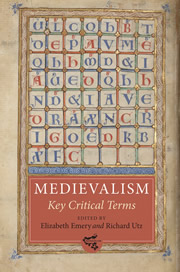Although the field of medievalism on screen is fairly young, there is already a massive amount of work on the topic in English alone. By medievalism, I am referring to recreations or evocations of the Middle Ages, purposefully or unwittingly. By screen, I am referring to movies, television, and short form content.
I’m maintaining this bibliography for several reasons. First, I couldn’t find anything comparable on the Internet (or in print). Second, I wanted to keep track of what I had read and still needed to read. After a while I’ve seen so many papers, articles, and books in footnotes that I lose track. I haven’t read all of these works (yet!) and I haven’t annotated all that I’ve read.
I’ll update this list as I continue to find, consume, and annotate works in this Sisyphean task. If you have any recommended additions, please feel free to holler at me in the comments or via email (scottmanning13@gmail.com).
Introductions and Methodologies
The following papers and books are superb places to start with medievalism on screen.
Aberth, John. A Knight at the Movies: Medieval History on Film. New York: Routledge, 2003.
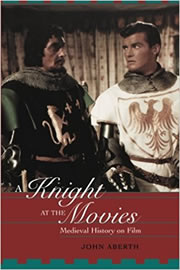 Aberth’s book-length treatment on medievalism on screen is one of the earliest written and it is a superb introduction. Aberth understands that “cinema neither can nor ought to take the place of historical scholarship,” but “it would be foolhardy of historians to neglect this medium altogether.” Thus, the author is “in favor of historians soiling their hands with the movies.”
Aberth’s book-length treatment on medievalism on screen is one of the earliest written and it is a superb introduction. Aberth understands that “cinema neither can nor ought to take the place of historical scholarship,” but “it would be foolhardy of historians to neglect this medium altogether.” Thus, the author is “in favor of historians soiling their hands with the movies.”
The author groups movies together by topic into 6 chapters, covering King Arthur, vikings, the Crusades, Robin Hood, the Black Death, and Joan of Arc. The approach is not to simply give a “thumbs up” or “thumbs down” on the accuracy of every film, but instead to “illustrate the complex relationship between modern and medieval history, for how we choose to remember the past reveals much about how we live in the present.” At the beginning of each chapter, Aberth examines how medieval and modern chronicles view the events or people in question, as well as the transmission of those chronicles in various mediums. These introductions act as mini-historiographies for each topic. This is helpful in understanding not just if the filmmaker got something right or wrong, but to understand why. It could include limitations of the medium, artistic necessities, politics, or just a lack of accessible history.
In many instances, Aberth reveals how films can get facts wrong, but still capture the essence of something from the medieval world. Aberth assumes positive intent by filmmakers, but admits to not holding back against “films that I feel mangle with malicious intent their medieval subject.” For example, The Black Knight (1954) receives derision for its visible telephone poles, poor choreography, and for being “perhaps the most politically driven film ever set in the Middle Ages.”
Aberth concludes “movie magic (and disaster) remains elusive,” and “the best we can do, perhaps, is dissect how a particular film got things right or wrong after it was made.”
Bernau, Anke and Bettina Bildhauer, eds. Medieval Film. Manchester: Manchester University Press, 2009.
Bildhauer, Bettina. “Medievalism and Cinema.” In The Cambridge Companion to Medievalism. Edited by Louise D’Arcens, 45-59. Cambridge: Cambridge University Press, 2016.
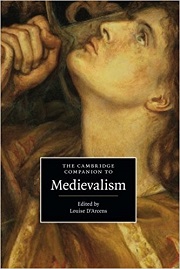 Bildhauer offers a succinct introduction to the current academic thinking around “medieval film,” which carries a broad definition of “anything that is perceived to be medieval by film-makers and audiences, including academic audiences.” That can include full-length movies, television programs, documentaries, short-films, and video art, which focus not just on films set in the Middle Ages, but also adaptations of medieval literature, adaptations of modern literature taking place at least partially in the Middle Ages, or fantasy worlds with medieval elements. It can even include other genres without apparent medieval attributes such as westerns, science fiction, and even detective films. Hence, why you can find academic papers on medievalism in Star Wars (see the Science Fiction section below).
Bildhauer offers a succinct introduction to the current academic thinking around “medieval film,” which carries a broad definition of “anything that is perceived to be medieval by film-makers and audiences, including academic audiences.” That can include full-length movies, television programs, documentaries, short-films, and video art, which focus not just on films set in the Middle Ages, but also adaptations of medieval literature, adaptations of modern literature taking place at least partially in the Middle Ages, or fantasy worlds with medieval elements. It can even include other genres without apparent medieval attributes such as westerns, science fiction, and even detective films. Hence, why you can find academic papers on medievalism in Star Wars (see the Science Fiction section below).
The author then explores some of the methods that academics use to analyze medieval film such as historical accuracy. This remains a hotly contested topic as some academics seemingly rage against anachronisms while others argue “film-makers can only do so much to attempt to include the latest research.” Then there are film-makers who are deliberate in their anachronisms (e.g., the Nike swoosh in A Knight’s Tale). Finally, there is the notion of whether it “feels” authentic to the audience who likely doesn’t know what’s accurate.
The author also touches on the “icons of the medieval,” which are “visual or acoustic short-cuts that evoke the period across a large number of films, such as knights, church bells, bad teeth and dirt.” On the thematic level, there is a lengthy exploration of the notion of temporal displacement in both the settings and perspectives within the film.
Bhildhauer emphasizes the need for academics to embrace medieval film, concluding, “Who says academic engagements with the Middle Ages are more important than, or indeed fundamentally different from, cultural or artistic ones? And who knows which future Tolkien or Jacques Le Goff might become interested in medieval matters by watching Brave or The Seventh Seal?”
This is a lengthy summary for a 14-page chapter in this bibliography, but this short chapter sums up the field where some book-length treatments don’t. If you’re getting started in medievalism on screen, I highly recommend reading Bildhauer’s chapter.
Burt, Richard. “Getting Schmedieval: Of Manuscripts and Film Prologues, Paratexts, and Parodies.” Exemplaria 19, no. 2 (2007): 217-242.
Burt tackles “cinematic paratext”–the title sequences, optional on-screen text, documentaries, interviews, commentary, and even posters associated with digitized and home releases of historical medieval films. The methods and intentions of filmmakers vary, but something as simple as a medieval scroll could be meant to emphasize authenticity or simply lampoon the medieval. In addition, the addition of paratext in the home releases can change the tone, meanings, and messages of the original films. Burt walks through several use cases on how historians can analyze paratext and where historians have fell short in past attempts.
Dahm, Murray. “Watching History Happen. Medieval Warfare on Film.” Medieval Warfare. May 16, 2013.
Dahm provides a broad overview of medieval films with clips from YouTube, emphasizing they “should be regarded as a starting point rather than a finishing one. If through a flawed film you discover aspects of history you didn’t know existed, you have the film to thank. You can still enjoy the film: just remember, it’s a film, not history. History still has to be found in good old fashioned sources and research, but if film leads you there – All hail the film!”
Driver, Martha W. and Sid Ray, eds. The Medieval Hero on Screen: Representations from Beowulf to Buffy. Jefferson: McFarland, 2004.
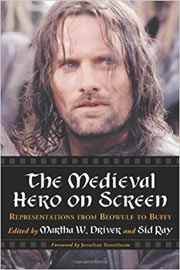 Driver and Ray have collected 11 papers on a large swath of topics along with 5 introductory papers of their own. Each chapter is thorough with its own filmography. Although “medieval hero” is the theme, this is a superb introduction to medievalism on screen. I’ve categorized each paper elsewhere throughout this bibliography, but the topics include languages and accents in The Lord of Rings trilogy; how audiences perceive authenticity in medieval films; the Arthurian subplot in Little Miss Marker (1934); neomedievalism masculinity in Star Wars (1977) and E.T. (1982); medieval and modern views on the virginity of heroines; reshaping traditional definitions of the medieval knight; an exploration of the power of heroes’ weapons from Homer to Dirty Harry; uses and appropriations of Merlin of as a character, plot device, and guide on screen; incorporating modern topics and themes through knights; using Joan of Arc films as teaching tools in the classroom; and of course, teaching the medieval hero on screen in the classroom.
Driver and Ray have collected 11 papers on a large swath of topics along with 5 introductory papers of their own. Each chapter is thorough with its own filmography. Although “medieval hero” is the theme, this is a superb introduction to medievalism on screen. I’ve categorized each paper elsewhere throughout this bibliography, but the topics include languages and accents in The Lord of Rings trilogy; how audiences perceive authenticity in medieval films; the Arthurian subplot in Little Miss Marker (1934); neomedievalism masculinity in Star Wars (1977) and E.T. (1982); medieval and modern views on the virginity of heroines; reshaping traditional definitions of the medieval knight; an exploration of the power of heroes’ weapons from Homer to Dirty Harry; uses and appropriations of Merlin of as a character, plot device, and guide on screen; incorporating modern topics and themes through knights; using Joan of Arc films as teaching tools in the classroom; and of course, teaching the medieval hero on screen in the classroom.
Elliott, Andrew B. R. Remaking the Middle Ages: The Methods of Cinema and History in Portraying the Medieval World. Jefferson: McFarland, 2011.
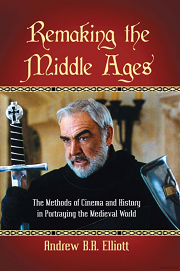 In this work, Elliott jumps into the anachronism debate, stating “there can often be some value gleaned from looking at where and why filmmakers ‘get things wrong.’” The latter is important, because “audience expectations can have as much influence in the construction of the Middle Ages as the historical period itself.” Essentially, filmmakers are aiming for what audiences will accept as authentic, not what historians will accept.
In this work, Elliott jumps into the anachronism debate, stating “there can often be some value gleaned from looking at where and why filmmakers ‘get things wrong.’” The latter is important, because “audience expectations can have as much influence in the construction of the Middle Ages as the historical period itself.” Essentially, filmmakers are aiming for what audiences will accept as authentic, not what historians will accept.
In order to explore this phenomenon, Elliott coins the term “historicon” to identify a film’s “visual conventions which each aim to evoke to the spectator an element of ‘medievality.’” These can include images such as knights, castles, and princesses. In addition to historicons, there are “the use of symbolic tropes, images or sequences of events (feasting scenes, knights in state, peasants at work, etc.).” The author argues that historians should abandon identifying and condemning anachronisms for history’s sake and instead seek to understand why filmmakers employ them. To do this, Elliott explores several medieval films with this model and reveals medievalism in popular culture.
I’ve found this lexicon and approach very useful in my own analysis of trebuchets on screen.
Finke, Laurie A. and Martin B. Shichtman. Cinematic Illuminations: The Middle Ages on Film. Baltimore: The John Hopkins University Press, 2010.
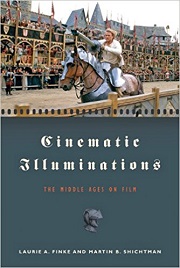 In this lengthy introduction to medievalism on screen, Finke and Shichtman offer multiple models to explore “the myriad ways in which contemporary popular culture uses the medieval past as a fantasy frame for making sense of our own world.” This enables them to “use our students’ experience of film to make them better readers of medieval literature–of its poetry, its history, and its art.” The following is a brief overview of some of the models, but this overview will hardly do them justice.
In this lengthy introduction to medievalism on screen, Finke and Shichtman offer multiple models to explore “the myriad ways in which contemporary popular culture uses the medieval past as a fantasy frame for making sense of our own world.” This enables them to “use our students’ experience of film to make them better readers of medieval literature–of its poetry, its history, and its art.” The following is a brief overview of some of the models, but this overview will hardly do them justice.
To explore the content of films, the authors present their “three little medievalisms”–nostalgia for better times, the association with less-civilized times, and the seeds of modernity. Immediately, the authors demonstrate how these can be used for films with a medieval setting, films that employ purposeful anachronisms, and modern-day films that simply employ medieval themes. This chapter alone fulfills “a central task for this book” by theorizing “the fantasy of medievalism.”
Then there is the model to explore the series of stock features, or signs that signify “medievalness” in order “to locate the viewer within the medieval framework of the film.” For this, the authors offer 4 syntagms–genre, formula, convention, and iconography. These incorporate some standard film theories, but with a medieval twist. The authors identify “filth” as “the icon that functions most vividly to call up the Middle Ages for the popular viewer.” Also interesting is notion that even sound can serve as an icon.
These are just some examples, as the authors offer more models on exploring historical accuracy, comparisons with medieval manuscripts, the influence of modern politics, and modern anxieties about the past, present, and future. Throughout the book, they explore more than 40 films, some in incredible depth.
Marshall, David W. “Introduction: The Medievalism of Popular Culture.” In Mass Market Medieval: Essays on the Middle Ages in Popular Culture. Edited by David W. Marshall, 1-12. Jefferson: McFarland, 2007.
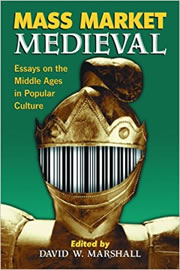 In this introduction, Marshall chronicles the rise of medievalism as an academic field. Although it is not focused purely on medievalism on screen, the author situates the sub-field within medievalism, emphasizing that other sub-fields are rising. In addition, the author chronicles some of the earliest works from the 1980s and 1990s on movie medievalism, paying tribute to Martin B. Schichtman, Norris J. Lacy, Kevin J. Harty, and others (look for their names throughout this bibliography). Although other medievalists have mentioned these names and works, this short paper does a superb job of detailing the rise of movie medievalism within the context of medievalism.
In this introduction, Marshall chronicles the rise of medievalism as an academic field. Although it is not focused purely on medievalism on screen, the author situates the sub-field within medievalism, emphasizing that other sub-fields are rising. In addition, the author chronicles some of the earliest works from the 1980s and 1990s on movie medievalism, paying tribute to Martin B. Schichtman, Norris J. Lacy, Kevin J. Harty, and others (look for their names throughout this bibliography). Although other medievalists have mentioned these names and works, this short paper does a superb job of detailing the rise of movie medievalism within the context of medievalism.
Pugh, Tison and Angela Jane Weisl. “Movie Medievalism.” In Medievalisms: Making the Past in the Present, 83-100 New York: Routledge, 2013.
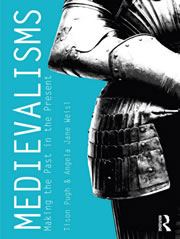 In their chapter on movie medievalisms, Pugh and Weisl emphasize that that it is impossible to create a medieval film free of anachronisms. As such, “it is not the presence of anachronisms in a film that merits analysis and investigation as much as their function.” To do this, they adopt Thomas Green’s rubric for identifying types of anachronisms—naïve, abusive, serendipitous, creative, and tragic, adding a sixth type, essential. They then run five different Arthurian films through this modified rubric. The exercise is fruitful and provides a useful model for analyzing medievalism on screen, as they reveal where a film may be successful because of or despite its anachronisms. Abusive anachronisms become too easy to identify in films that insist in their own accuracy, often getting basic dates, facts, and events wrong while eschewing the more entertaining, salacious stories of Arthur for the sake of “accuracy.” Intentional anachronisms can work for lampooning myths or criticizing modern perceptions. Finally, essential anachronisms are necessary to bring the story to the modern viewer who doesn’t understand languages such as medieval French.
In their chapter on movie medievalisms, Pugh and Weisl emphasize that that it is impossible to create a medieval film free of anachronisms. As such, “it is not the presence of anachronisms in a film that merits analysis and investigation as much as their function.” To do this, they adopt Thomas Green’s rubric for identifying types of anachronisms—naïve, abusive, serendipitous, creative, and tragic, adding a sixth type, essential. They then run five different Arthurian films through this modified rubric. The exercise is fruitful and provides a useful model for analyzing medievalism on screen, as they reveal where a film may be successful because of or despite its anachronisms. Abusive anachronisms become too easy to identify in films that insist in their own accuracy, often getting basic dates, facts, and events wrong while eschewing the more entertaining, salacious stories of Arthur for the sake of “accuracy.” Intentional anachronisms can work for lampooning myths or criticizing modern perceptions. Finally, essential anachronisms are necessary to bring the story to the modern viewer who doesn’t understand languages such as medieval French.
Williams, David John. “Looking at the Middle Ages in the Cinema: An Overview.” Film & History: An Interdisciplinary Journal of Film and Television Studies 29, no. 1-2 (1999): 8-19.
Williams provides an overview of common perspectives on medieval movies among academics, even listing some of their favorites based on informal polling. The author then presents four different types of medieval movies–the epic, the realistic, the literary adaptation, and the auteur. The author chooses one film for each type and examines them in detail, discussing what works and doesn’t work, revealing that each approach has its merits.
Woods, William F. “Authenticating Realism in Medieval Film.” In The Medieval Hero on Screen: Representations from Beowulf to Buffy. Edited by Martha W. Driver and Sid Ray, 38-51. Jefferson: McFarland, 2004.
Woods explores how audiences perceive and judge authenticity in medieval films. The author concludes with many others that audiences accept “what we think we know” about the medieval world, but that is only part of the equation. In addition, it is what audiences “need to think and feel about that dim medieval twilight when pain, death, and taxes were so much closer to the bone.” Woods explores how violence, extreme facial closeups, and identifying with melodramatic characters help audiences accept medieval movies as authentic.
As a Teaching Tool
Each of these papers provides anecdotes and explores how teachers have incorporated medieval film into their medieval history and medievalism courses. Many of these are refreshingly vulnerable, as the authors describe in detail their successes and failures with students.
Beatie, Bruce A. “Arthurian Films and Arthurian Texts: Problems of Reception and Comprehension.” Arthurian Interpretations 2 (1988): 65-78.
Beatie focuses on the use of Arthruian films in a “Faces of Camelot” undergraduate course where students watched 7 films, discussed the films and relevant readings, and received traditional lectures on Arthurian romance. Beatie chose this approach because “any real understanding of Arthurian literature, especially of its medieval texts, depends on an awareness of certain literary conventions with which college students today are rarely familiar, and on background knowledge of a period and a tradition which few students command.” The author found that the films provided media-oriented students with “a more immediate and profound means of access to the sometimes difficult works of Arthurian literary tradition.” The course and paper climax in the lecture and discussion of Excalibur (1981), which “was perhaps the most exciting event in my nearly thirty years of undergraduate teaching.”
Burkholder, Peter. “From Passive Viewer to Active Learner: Strategies for Teaching Medieval Film.” Studies in Medieval & Renaissance Teaching 24, no. 1 (2017).
Coote, Lesley A. and Brian J. Levy. “‘The Middle Ages Go to the Movies’: Medieval Texts, Medievalism, and E-Learning.” Studies in Medieval and Renaissance Teaching 10, no. 2 (2003).
Driver, Martha W. “‘Stond and Delyver’: Teaching the Medieval Movie.” In The Medieval Hero on Screen: Representations from Beowulf to Buffy. Edited by Martha W. Driver and Sid Ray, 211-. Jefferson: McFarland, 2004.
Driver explores specific scenes in various movies useful for the classroom. Particular attention paid to Monty Python and the Holy Grail (1975).
Driver, Martha. “Teaching the Middle Ages on Film: Visual Narrative and the Historical Record.” History Compass 5, no. 1 (2007) 159-174.
Driver believes “film remains one of the most useful tools for talking about the Middle Ages, for conveying with graphic immediacy some subjects not fully conjured by the written word.” The author offers examples of reviewing clips from films with students including King Arthur (2004), Kingdom of Heaven (2005), and Tristan & Isolde (2006), while then reading relevant medieval texts with the class. The anachronisms of the film were not harmful, but instead offered fodder for “lively discussion.” In addition, works of fiction based in the Middle Ages are helpful. For example, Driver found it was possible to read Beowulf through the prism of The 13th Warrior (1999).
Ganim, John M. “The Hero in the Classroom.” In The Medieval Hero on Screen: Representations from Beowulf to Buffy. Edited by Martha W. Driver and Sid Ray, 237-249. Jefferson: McFarland, 2004.
Ganim explores the challenges of teaching a “medieval hero on screen” course. The author’s scope is broad, including Arthurian legend, Braveheart (1995), and The 13th Warrior (1999). Ganim address specific challenges such as dealing with so much readily information about films on the Internet and the prevalence of studio copy that emphasizes the filmmakers’ intent. The author had to tweak approaches in questioning and challenging students to guide them away from what the Internet had to say about films and instead spark original thought. The author concludes, “Students respond instinctively to the idealism of the medieval film hero. They react more slowly to a critique of that idealism.”
Harty, Kevin J. “Teaching Arthurian Film.” In Approaches to Teaching the Arthurian Tradition. Edited by Maureen Fries and Jeanie Watson, 147-150. New York: MLA, 1992.
Harty recognizes that when undergraduate students “show up for the first day of a semester-long course in Arthurian literature, few have read–and some have never heard of–Chrétien, Wolfram, Malory, Tennyson, Twain, or White.” As such, The author renamed a 14-week course to “King Arthur in Literature and Film.” The paper provides a complete syllabus and Harty narrates each week’s objectives with anecdotes from students’ reactions.
Kelly, A. Keith. “Beyond Historical Accuracy: A Postmodern View of Movies and Medievalism.” Perspicuitas (2004): 1-19.
Kelly challenges the conflicting apathetic and hypercritical attitudes exuded by historians toward medieval films. In exploring the ways to use films to teach history, the author emphases “an assessment of medieval film that is limited to accuracy is woefully inadequate.” The author then uses films such as The 13th Warrior (1999), Braveheart (1995), First Knight (1995), and A Knight’s Tale (2001) to explore how such films are not historically accurate and are instead shaped by our collective understanding of the past and present.
McClain, Lee Tobin. “Introducing Medieval Romance via Popular Films: Bringing the Other Closer.” Studies in Medieval and Renaissance Teaching 5, no. 2 (1997): 59-63.
McClain (previously Tobin–see below) describes employing medieval films in a romance course, using clips from Camelot (1967), Excalibur (1981), Monty Python and the Holy Grail (1975), and Casablanca (1942). This article has some remarkable insights, as McClain found “students are more comfortable with medieval stories we read after viewing the familiar fight scenes in the Arthurian films.” In addition, “When I began using Casablanca to represent modern romance, however, I soon realized that for students, 1942 is almost as long ago as 1492. Most of my students quickly lumped Casablanca together with the medieval period.” Finally, “students are media experts, much more so than I am, and using media frees students to educate the educator.” McClain goes on to describe learning new things from students with every lesson using this method.
Myers, Michael D. “Teaching Medieval History through Legend and Film.” Studies in Medieval and Renaissance Teaching 5, no. 2 (1997).
Paden, William D. “I Learned It at the Movies: Teaching Medieval Film.” Studies in Medievalism 13 (2005): 79-98.
After teaching medieval movies at Northwestern University since 1989, Paden describes methods of categorizing the films into “historical, literary, and imaginary.” Paden then examines one film for each category–The Lion in Winter (1968), Perceval le Gallois (1978), and Platoon (1986), respectively. Imaginary is the most creative, as it can be any film with themes from the medieval past or literature. Paden concludes, “Medieval movies are symptoms of historical consciousness at the time of their production” and “by seeking to understand medieval movies we can gain insight into what the past means for us.”
Pagès, Meriem. “You Can’t Do This to Disney! Popular Medievalisms in the Classroom.” In Medieval Afterlives in Contemporary Culture. Edited by Gail Ashton, 58-66. London: Bloomsbury, 2015.
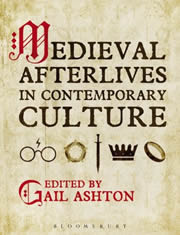 Pagès takes us directly into their medieval courses where they fully embrace medievalism, as the author believes “popular image of the Middle Ages can turn, if approached properly, into a lasting passion for Medieval Studies.” Each course starts with asking the students to describe what comes to mind when they hear “Middle Ages.” Pagès takes notes and emphasizes they want the students to focus on how people, places, and events are portrayed. Then the method involves reading medieval texts followed by watching clips from medieval movies and television, asking students to describe the portrayals.
Pagès takes us directly into their medieval courses where they fully embrace medievalism, as the author believes “popular image of the Middle Ages can turn, if approached properly, into a lasting passion for Medieval Studies.” Each course starts with asking the students to describe what comes to mind when they hear “Middle Ages.” Pagès takes notes and emphasizes they want the students to focus on how people, places, and events are portrayed. Then the method involves reading medieval texts followed by watching clips from medieval movies and television, asking students to describe the portrayals.
One interesting pitfall Pagès addresses is the age difference between some professors and students. A more seasoned professor may not be familiar with all the medievalisms students experienced throughout their childhood, especially in games. As Pagès bluntly states, “Popular medievalism is demanding.”
Psaki, F. Regina. “Pasolini’s Decameron and Teaching the Middle Ages.” Medieval Feminist Forum 23, no. 1 (1997): 47-52.
Psaki believes “looking critically at films as readings of their sources helps students to understand the poetics of borrowing, adaptation, and appropriation which governed literary activity in the Middle Ages.” To facilitate this experience, Psaki incorporates a variety of films, but focuses the article on Decameron (1971). Psaki shares reactions from students on the filmmakers’ take on Boccaccio’s original story. The teacher also focuses on the ideological agenda of the filmmaker.
Staines, David. “The Tradition of King Arthur: The Grail in Legend and Film.” Studies in Medieval and Renaissance Teaching 4, no. 1 (1993): 3-12.
Tobin, Lee Ann. “Contemporary Medievalism as a Teaching Tool.” Studies in Medieval and Renaissance Teaching 1, no. 2 (1990): 13-19.
The author argues philosophically and practically in favor of “using students’ existing knowledge of medievalism” as a teaching tool. For example, even if the student has a skewed perception because of a medieval film, it is still helpful by giving the student “something to actively adjust according to new information.” Also interesting are the author’s surveys on students’ familiarity with medieval films. The author then uses the results to provide examples on how to incorporate them into the classroom.
Wiethaus, Ulrike and Jane E. Jeffrey. “Cinematic Representations of Medieval Women and heir Legacy: Using Film, Text, and Theory to Teach Medieval Women’s Culture.” Medieval Feminist Forum 25, no. 1 (1998): 40-46.
Wiethaus and Jeffrey provide an introduction to their course on medieval women’s culture, as well as a complete copy of their 15-week syllabus that includes weekly reading and film viewings.
Woods, William F. “Cinematic Medievalism: Reflections on a Film Workshop.” Studies in Medieval and Renaissance Teaching 9, no. 1 (2002): 81-93.
Filmographies
Most medievalism on screen scholarship include a filmography in the back. The following works are purely filmographies, often providing brief details and reviews of each movie. See Arthurian Legend on Screen for filmographies focusing exclusively on Arthurian works.
Blanton, Virginia, Martha M. Johnson-Olin, and Charlene Miller. Medieval Women in Film: An Annotated Handlist and Reference Guide, with Essays on Teaching The Sorceress. 2nd ed. Medieval Feminist Forum, 2014.
The authors provide an annotated list of nearly 400 films, television series, and documentaries featuring portrayals of medieval women. The authors have grouped movies into historical, literature, and folklore. Then within each of those categories, the authors provide further groupings (e.g., Crusades, Joan of Arc). The most exhaustive of the entries include title, release date, director, and run time, along with brief commentary on the portrayal of women, but there is always enough information to point the reader in the right direction. They humbly admit that it is “in no way is this handlist exhaustive or complete,” but there is no other medieval filmography actively being updated with such a focus.
Coote, Lesley. “Survey of Twenty-First Century ‘Medieval’ Film.” In Medieval Afterlives in Contemporary Culture. Edited by Gail Ashton, 103-114. London: Bloomsbury, 2015.
In this survey, Coote thematically analyzes 37 different medieval films and film series from the 21st-century. The narrative is by no means all-inclusive, but it is the first of its kind for the new century. In addition, it is broad in its approach, including fantasy series such as Shrek and Harry Potter, as well as the anime series Berserk.
Halsall, Paul. “Medieval History in the Movies.” Internet Medieval Sourcebook, created 1996, last revised June 8, 2002.
Although abandoned in 2002 and not nearly as extensive as Harty’s book (see below), Halsall’s online list of 268 different medieval movies provides different categorizations missing from other filmographies–region and topic. Whereas Harty and Williams list films either alphabetically or by release date, Halsall utilizes categories such as Pagan Late Antiquity, Law, Crusades, and Homosexual/Transgendered Characters. In addition, there are lists of best/worst films by accuracy. There is also a short list of “myths” common in medieval period films.
For a review and critique of the filmography and methods of the lists, see Rosenstone’s “Reel Joan of Arc” (2003) in the Miscellaneous section below.
Harty, Kevin J. The Reel Middle Ages: American, Western and Eastern European, Middle Eastern and Asian Films About Medieval Europe. Jefferson: McFarland, 1999.
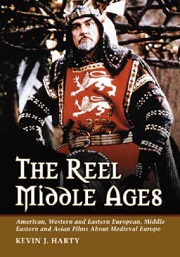 This is the work that many credit with solidifying medievalism on screen as an academic discipline. After nearly 20 years, there is nothing else like it in print. The book is an encyclopedia of 564 medieval films released between 1897 and 1996. Harty not only provides essential details on each film, but also summaries and short commentaries along with references to reviews and discussions on the films. This is the best place to start when trying to get a grasp on the vastness of medieval movies from the 20th-century.
This is the work that many credit with solidifying medievalism on screen as an academic discipline. After nearly 20 years, there is nothing else like it in print. The book is an encyclopedia of 564 medieval films released between 1897 and 1996. Harty not only provides essential details on each film, but also summaries and short commentaries along with references to reviews and discussions on the films. This is the best place to start when trying to get a grasp on the vastness of medieval movies from the 20th-century.
Films are arranged alphabetically by title. Desperately needed is an arrangement of films by periods, places, and themes. For an arrangement by release date see the works of David Williams (below).
Holly, Linda Tarte. “Medievalism in Film: The Matter of Arthur, A Filmography.” In Mittelalter-Rezeption III. Edited by Jürgen Kühnel, et al. Göppingen: Kümmerle, 1988.
Norako, Leila K. “Crusades Project: Twentieth and Twenty-First Century Literature.” The Crusades Project.
Norako has a films section with only 12 crusading movies so far, but each entry contains commentary. Future updates are promised.
Williams, David. “Medieval Movies.” The Yearbook of English Studies 20 (1990): 1-32.
Williams provides one of the early introductions to medieval movies, presenting some of the typical questions around the role of the historian–anachronism, presentism, and audience expectations. The author traces reoccuring and evolving themes affected by world events–the Depression, world wars, Nuclear threat. At the end, Williams provides a “far from exhaustive” filmography of 244 medieval films between 1898 and 1988, grouped by year. Each entry contains only the bare essentials–Title, director, location, and an indication if its animated.
Williams, David John. “Medieval Movies: A Filmography.” Film & History: An Interdisciplinary Journal of Film and Television Studies 29, no. 1-2 (1999): 20-32.
In this updated filmography, Williams provides only a brief introduction and then a much more comprehensive listing of films, grouped by year from 1898 to 1996. Along with title, director, and location, Williams also attempts to include the studio for each film, but is admittedly not always successful. In addition, Williams admits this is a work in progress with more entries to come. Comparatively, this it contains 380 films compared to the 244 films in the 1990 filmography (see above).
Arthurian Legend
As John Aberth pointed out, “There are more books about Arthurian films than perhaps about any other medieval film genre.” This still holds true today and the same goes for articles, thus there is a separate page for Arthurian Legend on Screen: An Annotated Bibliography.
Beowulf
Although Beowulf is the most-read work in English literature, there were virtually no theatrical treatments of the film until 1999 (see Haydock and Risden below). Since then, films such as Beowulf (1999), The 13th Warrior (1999), Beowulf & Grendel (2005), the computer-animated Beowulf (2007), and Outlander (2008) have hit theaters as attempts to closely or loosely adapt the poem. As such, most of the medievalism scholarship has focused on these films, but can also include television treatments and films that appropriate characters and themes from the poem.
Acker, Paul. “Beowulf at the Movies.” In Teaching Beowulf in the Twenty-First Century. Edited by Howell Chickering, Allen J. Frantzen, and R. F. Yeager, 39-44. Tempe: ACMRS, 2014.
Bernau, Anke. “Suspended Animation: Myth, Memory and History in Beowulf.” Screening the Past 26 (2009).
Bernau explores how filmmakers aim to connect viewers with history and medieval literature through advancements in computer animation, judging the success of films such as Beowulf (2007).
Bowman, Mary R. “Words, Swords, and Truth: Competing Visions of Heroism in Beowulf on Screen.” Studies in Medievalism 23 (2014): 147-166.
Brookes, Stewart. “From Anglo-Saxon to Angelina: Adapting Beowulf for Film.” In Medieval Afterlives in Contemporary Culture. Edited by Gail Ashton, 81-92. London: Bloomsbury, 2015.
Brookes examines attempts to bring Beowulf to screen in an episode of Star Trek: Voyager, and the movies Beowulf (1999), The 13th Warrior (1999), Beowulf and Grendel (2005), Outlander (2008), and of course, the computer-animated Beowulf (2007).
Brown, William. “Beowulf: The Digital Movie Monster.” Animation: An Interdisciplinary Journal 4, no. 2 (2009): 153-168.
Brown explores the theme of monstrosity and unintended humor through the physical monsters, motion capture, CGI, aesthetics, and mechanized human beings in Beowulf (2007).
Dahm, Murray. “Chasing the Monster: Beowulf on Film.” Medieval Warfare 7, no. 5 (2017): 54-57.
Driver, Martha. “Beowulf and New Media.” In Teaching Beowulf in the Twenty-First Century. Edited by Howell Chickering, Allen J. Frantzen, and R. F. Yeager, 45-53. Tempe: ACMRS, 2014.
Grewell, Cory Lowell. “Vanquishing the Beast Within: Christianization of the Hero Ethos in Robert Zemeckis’s Beowulf.” The Year’s Work in Medievalism 24 (2009): 73-84.
Grewell explores the conflicting modifications made by the filmmakers of Beowulf (2007) from its original source material. In the process, Grewell reveals that attempts to tone down the “Christian” morals of the poem while enhancing the pagan world, the filmmakers infused a different set of Christian morals into the film.
Haydock, Nickolas. “Film Theory, the Sister Arts Tradition, and the Cinematic Beowulf.” Studies in Medievalism 22 (2013): 153-180.
Using Beowulf, Haydock explores how “inter-arts comparisons occupy the borderland” of “crossovers and continuities between traditional scholarship and movie medievalism.” To do this, Haydock examines the scholarship on adaptations by other mediums such as literature and art, and compares them to the scholarship on movie medievalism.
A version of this paper also appears in Beowulf on Film (see below).
Haydock, Nickolas. “Making Sacrifices: Beowulf and Film.” The Year’s Work in Medievalism 27 (2012).
Haydock reviews the openings of recent Beowulf films, concluding that although they differ from the poem in terms of events and content, they carry similar themes of sacrifice.
A version of this paper also appears in Beowulf on Film (see below).
Haydock, Nickolas. “Meat Puzzles: Beowulf and Horror Film.” Studies in Medievalism 23 (2014): 123-146.
Haydock, Nickolas and E. L. Risden. Beowulf on Film: Adaptations and Variations. Jefferson: McFarland, 2013.
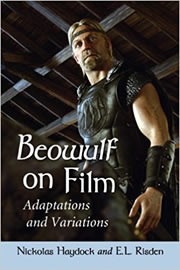 Haydock and Risden combine their previously published and presented papers, as well as new material to produce this book-length treatment on the medievalism of Beowulf movies. While these include the obvious films such as Beowulf (1999), The 13th Warrior (1999), Beowulf & Grendel (2005), Beowulf (2007), and Outlander (2008) there is also extensive analysis on films and televsion shows that appropriate themes, characters, and elements from the epic such as No Such Thing (2001) and Xena’s Beowulf episodes in season 5 of the series.
Haydock and Risden combine their previously published and presented papers, as well as new material to produce this book-length treatment on the medievalism of Beowulf movies. While these include the obvious films such as Beowulf (1999), The 13th Warrior (1999), Beowulf & Grendel (2005), Beowulf (2007), and Outlander (2008) there is also extensive analysis on films and televsion shows that appropriate themes, characters, and elements from the epic such as No Such Thing (2001) and Xena’s Beowulf episodes in season 5 of the series.
There are several general themes that immediately crop up. First, there were virtually no theatrical treatments of Beowulf until 1999, save for the animated musical Grendel, Grendel, Grendel (1981). Second, of the rash of Beowulf films released since then, only one has turned a profit. Finally, none of these films is wholly faithful to the source material. As the authors examine these films, they find that most of them incorporate elements from Lord of the Rings while also producing “an accumulation of themes inherited from earlier film Beowulfs.”
After examining so many Beowulfs, Risden concludes it is “unlikely, if not impossible, within mainstream cinema” to produce “a full-length Beowulf film that actually sticks pretty closely to the poem.” The book ends with Haydock’s ideal film treatment of Beowulf in a trilogy format, which is a pleasure to read.
Hinz, Philipp and Margitta Rouse. “Adaptation as Hyperreality: The (A)historicism of Trauma in Robert Zemeckis’s Beowulf.” In The Medieval Motion Picture: The Politics of Adaptation. Edited by Andrew James Johnston, Margitta Rouse, and Philipp Hinz, 129-153. New York: Palgrave, 2014.
Marshall, David W. “Getting Reel with Grendel’s Mother: The Abject Maternal and Social Critique.” Studies in Medievalism 19 (2010): 135-159.
Morgan, Gwendolyn. “Beowulf and the Middle Ages in Film.” The Year’s Work in Medievalism 24 (2009): 3-15.
Risden, E. L. “A Corporate Neo-Beowulf: Ready or Not, Here We Come.” Studies in Medievalism 21 (2012): 49-56.
Risden analyzes No Such Thing (2001), a satiric Beowulf story that the author believes is “a marvelous and under-appreciated cinematic revision of the Anglo-Saxon epic” that “represents the most notable and most polar alternative of the cinematic commoditization process.”
Risden, E. L. “The Cinematic Sexualizing of Beowulf.” Essays in Medieval Studies 26 (2010): 109-115.
Risden argues that the sexualizing of Beowulf in recent films has served to eliminate the “ideas of heroism, loyalty, and personal accomplishment balanced with martial service and self-sacrifice” found in the original epic. Instead, viewers get “exoticisization and titillation that reshape the story as fable about the problems of male sex-drive.”
A version of this paper also appears in Beowulf on Film (see above).
Braveheart (1995)
Works on movie medievalism often evoke Mel Gibson’s Braveheart (1995) for its distortions of history and its global influence. There are far too many papers criticizing the historical accuracy of the film and only a few are listed here to provide a flavor for the topic.
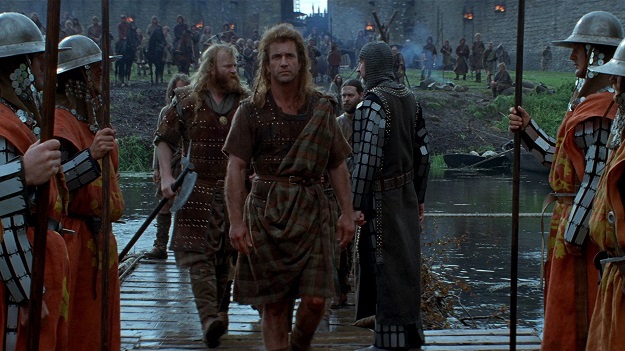
Canitz, A. E. Christa. “‘Historians . . . Will Say I Am a Liar’: The Ideology of False Truth Claims in Mel Gibson’s Braveheart and Luc Besson’s The Messenger.” Studies in Medievalism 13 (2005): 127-142.
Costley, Tom. “Braveheart Versus Rob Roy: How Stirling Won the Tourist Battle.” Researchplus (June 1997): 14-15.
Dahm, Murray. “‘The Dead Cost of Nothing’: Edward I on Film.” Medieval Warfare 8, no. 2 (2018): 56-57.
Edensor, Tim. “Reading Braveheart: Representing and Contesting Scottish Identity.” Scottish Affairs 21 (1997): 135-158.
Edensor examines the local impact on Scottish tourism and identity from Braveheart (1995). The author pays particular attention to how the travel industry used the success of the movie to entice tourists to Stirling. Similarly, various political parties appropriated the Hollywood version of William Wallace to promote their campaigns and agendas. Although, there were plenty of critics of the film.
Hague, Euan. “Scotland on Film: Attitudes and Opinions About Braveheart.” Études Écossaises 6 (1999): 75-89.
Hawley, Kenneth Carr. “The Re-Making of a Mythic Hero: Scottish Nationalism in Braveheart.” Master’s thesis, Texas Tech University, 1998.
Keller, James R. “Masculinity and Marginality in Rob Roy and Braveheart.” Journal of Popular Film and Television 24, no. 4 (1997): 146-151.
Krossa, Sharon L. “Braveheart Errors: An Illustration of Scale.” Medieval Scotland, July 23, 2001.
Krossa seeks to emphasize the scale of historical errors in Braveheart by detailing the errors found in just the first two minutes with a total of 18. The author concludes, “Every bit and every aspect of these introductory scenes are, to put it bluntly, wrong. And the rest of the film follows the same pattern.”
This provides historians with an easy answer to popular questions about accuracy in medieval movies–“Well there are 18 factual errors in the first 2 minutes of Braveheart.”
Luhr, William. “Mutilating Mel: Martyrdom and Masculinity in Braveheart.” In Mythologies of Violence in Postmodern Media. Edited by Christopher Sharret, 227-246. Detroit: Wayne State University Press, 1999.
McArthur, Colin. “Braveheart and the Scottish Aesthetic Dementia.” In Screening the Past: Film and the Representation of History. Edited by Tony Barta, 167-188. Westport: Praeger, 1998.
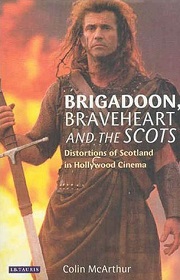 McArthur, Colin. Brigadoon, Braveheart and the Scots: Distortions of Scotland in Hollywood Cinema. New York: Palgrave, 2003.
McArthur, Colin. Brigadoon, Braveheart and the Scots: Distortions of Scotland in Hollywood Cinema. New York: Palgrave, 2003.
Although not focused exclusively on Braveheart, half the book tackles the movie and its reception in and out of Scotland. McArthur gives particular focus to the film’s distortions and selective appropriations of history and integration of Hollywood tropes to create a modern medieval myth. In addition, the author traces the appropriations made by viewers of the film to support ideologies and nationalist movements in Scotland.
McArthur also examines the origins of the film’s historical inaccuracies, tracing many of them to themes and characters from previous Hollywood movies, none of which had anything to do with the figure of William Wallace.
Sharp, Michael D. “Remaking Medieval Heroism: Nationalism and Sexuality in Braveheart.” Florilegium 15 (1998): 251-266.
Sharp argues that nationalism and sexuality are “intimately intertwined” in Braveheart “and that the film uses male sexuality in particular as a way of expressing the relationship between citizen and country.” The depiction of William Wallace is “emphatic and consistent in its use of male sexuality as a sign of a nation’s morale strength.” His heterosexual love and desire to avenge his wife’s death are contrasted against the depictions of English rape, incestual thoughts, homosexuality, and sexism. The author thoroughly analyzes the depictions of Edward II, who “never once makes it out of the castle,” even for an archery tournament. Conversely, “Wallace fights outdoors, in hand-to-hand combat, with the fate of his nation at stake.”
Ray, Sid. “Hunks, History, and Homophobia: Masculinity Politics in Braveheart and Edward II.” Film & History: An Interdisciplinary Journal of Film and Television Studies 29, no. 3-4 (1999): 22-31.
Shippey, Tom. “Medievalisms and Why They Matter.” Studies in Medievalism 17 (2009): 45-54.
Although not exclusively about Braveheart, Shippey uses the movie to illustrate a larger point that “scholars have a duty to trace connections, to expose errors, and above all to make their voices heard inside and outside the academy.” As for Braveheart, the author calls the film a “historical travesty” and theorizes that “if the United Kingdom does break up, as some predict, it will have played a significant part.”
Sturtevant, Paul B. “Mel Gibson, you Magnificent Bastard.” The Public Medievalist, July 31, 2014.
Sturtevant tackles major inaccuracies in Braveheart, arguing that it is a good film, but “terrible history.” The film is so good that if Scotland votes to leave the UK, then the author believes “that at least a small portion of the blame or credit could be laid at the feet of one anti-Semitic, misogynistic Australian: Mel Gibson.”
Chaucer / A Knight’s Tale (2001)
Geoffrey Chaucer has found nominal success in Hollywood adaptations of his work with A Knight’s Tale (2001) being the standout exception. The following works focus predominately on the adaptations of Chaucer’s stories.
Cetiner-Oktem, Zuleyha. “Dreaming the Middle Ages: American Neomedievalism in A Knight’s Tale and Timeline.” Interactions (2009): 43-56.
Cetiner-Oktem explores how American culture may be seeking to restore ancestral ties to Europe through neomedievalism in films such as A Knight’s Tale (2001) and Timeline (2003).
D’Arcens, Louise. “Deconstruction and the Medieval Indefinite Article: The Undecidable Medievalism of Brian Helgeland’s A Knight’s Tale.” Parergon 25.2 (2008): 80-98.
Forni, Kathleen. “Reinventing Chaucer: Helgeland’s A Knight’s Tale.” Chaucer Review 37, no. 3 (2003): 253-264.
Forni immediately admits that “this delightfully anachronistic fairy tale” bares little resemblance to the original literary work. “However, Helgeland’s apparently idiosyncratic representation of Chaucer’s character does indeed provoke (at least the literary critic) to consider both the history of the Chaucerian persona and how Chaucer is constructed in the popular imagination.”
Green, Martin. “The Dialectic of Adaptation: The Canterbury Tales of Pier Paolo Pasolini.” Literature/Film Quarterly 4, no. 1 (1976): 46-53.
Hardwick, Paul. “Arthurising the Wife of Bath: Two Chaucer Adaptations.” The Year’s Work in Medievalism 32 (2017).
Harty, Kevin J. “Chaucher for a New Millennium: The BBC Canterbury Tales.” In Mass Market Medieval: Essays on the Middle Ages in Popular Culture. Edited by David W. Marshall, 13-27. Jefferson: McFarland, 2007.
Harty examines the BBC 2003 television series The Canterbury Tales. Unlike Chaucer’s original interconnected work, these are six standalone episodes that are the work of six writers and four directors, which is evident to Harty. The author also sees a much bleaker world portrayed in the BBC series than in Chaucer’s original work.
Harty, Kevin J. “Chaucer in Performance.” In Chaucer: An Oxford Guide. Edited by Steve Ellis, 560-572. Oxford: Oxford University Press, 2005.
Kelly, Kathleen Coyne. “The BBC Canterbury Tales (2003).” In Medieval Afterlives in Contemporary Culture. Edited by Gail Ashton, 134-143. London: Bloomsbury, 2015.
Kelly, Kathleen Coyne and Tison Pugh, eds. Chaucer on Screen: Absence, Presence, and Adapting the Canterbury Tales. Columbus: The Ohio State University Press, 2016.
Paxson, James J. “The Anachronism of Imagining Film in the Middle Ages: Wegener’s Der Golem and Chaucer’s Knight’s Tale.” Exemplaria 19, no. 2 (2007): 290-309.
Pugh, Tison. “Chaucerian Fabliaux, Cinematic Fabliau: Paolo Pasolini’s I racconti di Canterbury.” Literature/Film Quarterly 32, no. 3 (2004): 199-206.
Trigg, Stephanie. “Medievalism and Convergence Culture: Researching the Middle Ages for Fiction and Film.” Parergon 25, no. 2 (2008): 99-118.
Trigg uses A Knight’s Tale (2001) to demonstrate how filmmakers pull from a range of medieval sources, but ultimately discarding, tweaking, and adding to suit their artistic privilege. Trigg concludes “the distinctions between medieval and medievalist literature, or medieval and medievalism studies are clear to most within the academy, but virtually meaningless outside it.”
Wilkes, Hannah. “Chaucer Comes to Hollywood: Changing Stars and Staying Authentic in A Knight’s Tale.” Studies in Popular Culture 35, no. 1 (2012): 91-107.
Crusades
These works focus almost exclusively on film and television involving the Crusades.
Bonet, Maria and John Style. “Utopia and the Middle Ages in Popular Culture: A Reading of Ridley Scott’s Kingdom of Heaven.” Spaces of Utopia 5 (2007): 55-93.
Dahm, Murray. “An Invisible Clash: The Battle of Hattin on Film.” Medieval Warfare 7, no. 4 (2017): 56-57.
Dahm, Murray. “A Modern Film in Medieval Garb: Kingdom of Heaven.” Medieval Warfare 6, no. 5 (2016): 54-55.
Halim, Hala. “The Signs of Saladin: A Modern Cinematic Rendition of Medieval Heroism.” Alif: Journal of Comparative Poetics 12 (1992): 78-94.
Haydock, Nickolas and E. L. Risden, eds. Hollywood in the Holy Land: Essays on Film Depictions of the Crusades and Christian-Muslim Clashes. Jefferson: McFarland, 2009.
Neufeld, Christine M. “Unmasking the Leper King: The Spectral Jew in The Kingdom of Heaven.” The Year’s Work in Medievalism 23 (2008): 81-96.
Stevenson, Barbara. “Representation of Saladin in the (New) Middle Ages.” Studies in Medieval and Renaissance Teaching 18, no. 2 (2011): 23-34.
Disney
These works focus exclusively on film and television from Disney. For works related to The Sword in the Stone (1963), see the Arthurian section above.
Attwood, Adam I. Social Aesthetics and the School Environment: A Case Study of the Chivalric Ethos. New York: Palgrave, 2018.
Attwood dedicates a chapter that focuses on Disney’s contribution to the popular perception of chivalry, which “provides additional context to explain the influence of popular culture on pre-service K-8 teachers’ perceptions of chivalry as a historical social construct.”
Bradford, Clare. “‘Where Happily Ever After Happens Every Day’: The Medievalisms of Disney’s Princesses.” In The Disney Middle Ages: A Fairy-tale and Fantasy Past. Edited by Tison Pugh and Susan Aronsten, 171-188. New York: Palgrave, 2012.
Cecire, Maria Sachiko. “Reality Remixed: Neomedieval Princess Culture in Disney’s Enchanted.” In The Disney Middle Ages: A Fairy-tale and Fantasy Past. Edited by Tison Pugh and Susan Aronsten, 243-. New York: Palgrave, 2012.
Cecire examines Disney’s live-action musical Enchanted (2007), a “film that refuses any historical anchor for Disney’s fairy-tale ethos” and instead relies on neomedievalism, as it poaches from Disney’s archive of fairy tales for its source material.
Craven, Allison. “Esmeralda of Notre-Dame: The Gypsy in Medieval View from Hugo to Disney.” In The Disney Middle Ages: A Fairy-tale and Fantasy Past. Edited by Tison Pugh and Susan Aronsten, 225-242. New York: Palgrave, 2012.
Ford, Judy Ann. “Women of the Cinematic Middle Ages in Red Riding Hood and Brave: Marriage or Monsters.” In The Middle Ages in Popular Culture: Medievalism and Genre. Edited by Helen Young, 35-53. Amherst: Cambria Press, 2015.
Foster, Amy. “Futuristic Medievalisms and the U.S. Space Program in Disney’s Man in Space Trilogy and Unidentified Flying Oddball.” In The Disney Middle Ages: A Fairy-tale and Fantasy Past. Edited by Tison Pugh and Susan Aronsten, 153-167. New York: Palgrave, 2012.
Foster examines Disney’s Man in Space trilogy (1955) and Unidentified Flying Oddball (1979) “from a historical perspective and understands them as reflections of Walt Disney’s seemingly contradictory fascination with the medieval era and his technological enthusiasm, an enthusiasm that played out not only in the films and parks but also in Disney’s support of America’s burgeoning and continuing space agenda.” The optimism in Disney and Americans did not live up to the history of the space program. Foster concludes, “Disney’s emphasis on futuristic medievalism in his creations reflects the blind faith that Americans have in technology and our sterilized interpretation of how we invented the twenty-first century.”
Hatch, David A. “The Carnival Mirror: Ideological Twists on The Feast of Fools in Disney’s Adaptation of The Hunchback of Notre Dame.” Response: The Digital Journal of Popular Culture Scholarship 1 (2016).
Kelly, Kathleen Coyne. “Disney’s Medievalized Ecologies in Snow White and the Seven Dwarfs and Sleeping Beauty.” In The Disney Middle Ages: A Fairy-tale and Fantasy Past. Edited by Tison Pugh and Susan Aronsten, 189-207. New York: Palgrave, 2012.
Labbie, Erin Felicia. “The Sorcerer’s Apprentice: Animation and Alchemy in Disney’s Medievalism.” In The Disney Middle Ages: A Fairy-tale and Fantasy Past. Edited by Tison Pugh and Susan Aronsten, 97-113. New York: Palgrave, 2012.
Labbie analyzes the use of medieval alchemy in the various versions of the “The Sorcerer’s Apprentice” in Fantasia (1940), Fantasia 2000 (1999), and The Sorcerer’s Apprentice (2010), which “exhibit the ways that Disney’s medievalism is manifested even in its most apparently modern or contemporary technological innovations and applications.”
Mitchell-Smith, Ilan. “The United Princesses of America: Ethnic Diversity and Cultural Purity in Disney’s Medieval Past.” In The Disney Middle Ages: A Fairy-tale and Fantasy Past. Edited by Tison Pugh and Susan Aronsten, 209-224. New York: Palgrave, 2012.
Norako, Leila K. Review of Brave. Medievally Speaking, August 30, 2013.
This is more than just a review of Brave (2012). Norako examines the common feedback from historians on the medieval settings and anachronisms in the film. In the process, the author explores how medieval romance, anachronisms, and modern themes make a good movie.
Pavlinich, Elan. “The Chaucerian Debate of Auctorite versus Experience in Disney’s Sleeping Beauty and Maleficent.” The Year’s Work in Medievalism 30 (2015).
Pavlinich argues that by “citing both women’s experience and Disney as the source for the film’s auctorite [authority], Maleficent strives to recuperate Disney’s Sleeping Beauty narrative for an audience who is familiar with feminist criticism.” The author makes comparisons with Chaucer’s debate with textual authority.
Sturtevant, Paul. “‘You Don’t Learn It Deliberately, But You Just Know It from What You’ve Seen’: British Understandings of the Medieval Past Gleaned from Disney’s Fairy Tales.” In The Disney Middle Ages: A Fairy-tale and Fantasy Past. Edited by Tison Pugh and Susan Aronsten, 77-96. New York: Palgrave, 2012.
Sturtevant attempts to quantify the amount of influence Disney has on children’s perspective of the medieval world through a sociological study with British students (not kids), focusing on “how Disney’s animated films influenced their current perceptions of the Middle Ages, whether those films were self-evidently medieval in setting and provenance or not.” Along with Disney’s traditional medievalism films (e.g., Sleeping Beauty), Sturtevant focuses on how Aladdin shapes perceptions on the medieval Islamic world.
Telotte, J. P. “Flatness and Depth: Classic Disney’s Medieval Vision.” The Year’s Work in Medievalism 30 (2015).
Telotte traces the evolution of castles in Disney animation from thee earliest days to Brave (2012). From movie to movie, the depth and representation of castles grow, as technology, and the need for medevialism change.
Game of Thrones
There are countless articles online covering medievalism in HBO’s Game of Thrones television series. I’ve included some of the more salient ones below, but you can find more on The Conversation.
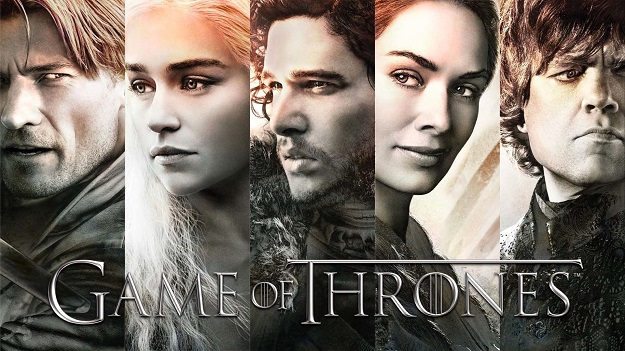
Askey, Brooke. “‘I’d Rather Have No Brains and Two Balls’: Eunuchs, Masculinity, and Power in Game of Thrones.” The Journal of Popular Culture 51, no. 1 (2018): 50-67.
Although Askey concedes that “criticisms of the series’ portrayal of women, people of color, and the poor are justified,” Game of Thrones “does make strides in subverting some problematic constructions of gender,” albeit “mostly in the roles of the male characters’ fears of castration.”
Bleisteiner, Martin. “Perils of Generation: Incest, Romance, and the Proliferation of Narrative in Game of Thrones.” In The Medieval Motion Picture: The Politics of Adaptation. Edited by Andrew James Johnston, Margitta Rouse, and Philipp Hinz, 155-169. New York: Palgrave, 2014.
Byrne, Philippa. “Why medievalists should stop talking about Game of Thrones.” The Conversation, June 15, 2016.
Byrne is “skeptical about using Game of Thrones as a way into medieval history,” to say the least. The reasons focus on the conglomeration of periods and places mixed with dragons. In addition, the gruesomeness of GoT reinforces the notion of “The Dark Ages,” a negative stereotype medievalists have struggled to eradicate. The author sees more fruit gained in engaging with medieval period works (minus the fantasy) such as The Last Kingdom and The White Queen. The brief article is unique in its seemingly lone voice against a tidal wave of medievalists engaging with the GoT phenomenon.
Carroll, Shiloh. Medievalism in A Song of Ice & Fire & Game of Thrones. Woodbridge: D. S. Brewer, 2018.
Clark, James. “How the Battle of the Bastards squares with medieval history.” The Conversation, June 24, 2016.
DeVries, Kelly. “Game of Thrones as History: It’s Not as Realistic As It Seems–and That’s Good.” Foreign Affairs, March 29, 2012.
DeVries tells us that “as a historian of the period, I can assure you that the real Middle Ages were very boring — and if Martin’s epic were truly historically accurate, it would be very boring too.” The author emphasizes that the mythical figures of Beowulf, King Arthur, Robin Hood, and St. George were not nearly as exciting as their real-life counterparts. Similarly, with a few exceptions, real campaigns and battles were tedious, logistical nightmares that hardly make for entertaining viewing. DeVries reviews several medieval inspirations for characters and events throughout GoT.
Facchini, Riccardo. “‘I watch it for historic reasons.’ Representation and reception of the Middle Ages in A Song of Ice and Fire and Game of Thrones.” Práticas da História 5 (2017): 43-73.
Gebhardt, Torben R. “Homosexuality in Television Medievalism.” In The Middle Ages on Television: Critical Essays. Edited by Meriem Pagès and Karolyn Kinane, 197-213. Jefferson: McFarland, 2015.
Gebhardt starts with an outline of portrayals of homosexuals in television (positive and negative) before moving onto portrayals in television medievalism. Then the author explores “how gay characters are represented” in the first four seasons of Game of Thrones, drawing “conclusions about neomedievalism as well as about the importance of ‘provocative entertainment’ to modern perceptions and representations of homosexuality.
Kennedy, Kathleen E. “Game of Thrones’ Medieval Crap.” The Public Medievalist, July 22, 2017.
Using a rather graphic montage from Game of Thrones, Kennedy explores what the medieval options were for dealing with feces before the advent of indoor plumbing.
Larrington, Carolyne. Winter is Coming: The Medieval World of Game of Thrones. London: I. B. Tauris, 2016.
This book does not analyze the sources of Game of Thrones, but instead is “about what happens when medievalist Game of Thrones fans get together, discussing what Westeros and Essos have in common with both the historical medieval world and the altogether more arcane and vivid world of the medieval imagination: parallels, reminiscences, shared structures and understandings.” Focuses on books and HBO series.
Mondschein, Ken. Games of Thrones and the Medieval Art of War. Jefferson: McFarland, 2017.
Pavlac, Brian A., ed. Game of Thrones Versus History. Malden: Wiley Blackwell, 2017.
Shaham, Inbar. “Brienne of Tarth and Jaime Lannister: A Romantic Comedy Within HBO’s Game of Thrones.” Mythlore 33, no. 2 (2015): 49-71.
Sturtevant, Paul B. “Was Sexual Abuse Normal in the Middle Ages?” The Public Medievalist, May 28, 2015.
Sturtevant uses the persistence of sexual abuse in Game of Thrones to address how common it was during the Middle Ages. The author looks at the record from the perspective of secular and religious law, as well as class. Sturtevant emphasizes that rape “has been one of the great horrifying constants in our society throughout every age, and that in many ways we are not so far from our medieval forebears in our perception of it.”
Young, Helen. “Game of Thrones’ Racism Problem.” The Public Medievalist, July 21, 2017.
Young argues that the nearly-all-white representation of Game of Thrones is based on medieval literature, not medieval history.
Harry Potter
There is remarkably little work dedicated to the medievalism in the Harry Potter film series (2001–2011), but I expect this to grow over time. There are other instances of Harry Potter mentioned with a collection of films throughout this bibliography.
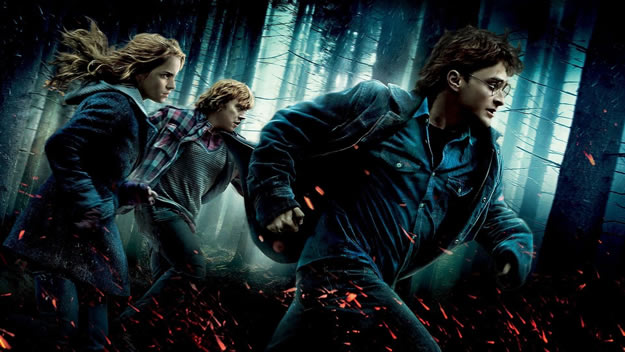
Bayne, Karen M. “Haunted Castles and Hidden Rooms: Gothic Spaces and Identity in Harry Potter.” In Phoenix Rising: Collected Papers on Harry Potter, 17-21 May 2007. Edited by Sharon K. Goetz, 262-272. Sedalia: Narrate Conferences, 2008.
Bridge, Deborah. “The Greatest Epic of the Twenty-first Century?” In The Return of the Epic Film: Genre, Aesthetics and History in the 21st Century. Edited by Andrew B. R. Elliott, 188-200. Edinburgh: Edinburgh University Press, 2015.
Bridge takes scholars to task for the lack of work on the Harry Potter films, especially as part of the epic genre. By admitting the series to the epic cinematic canon, Bridge argues it “will enable us to examine how the series is unique in being the first epic made for, featuring, and largely made popular by children.” To make the case, Bridge uses every definition of epic available including Aristotle’s definition for the classical epic: “length, unified action, multiple plots, a story that arouses pity and fear, an epic hero, spectacle, and a happy resolution”; definitions specific to epic films such as “characterized by sweeping visual images”; and even a film dictionary that defines epics as “films dealing with major historical . . . themes.”
After making the case for Harry Potter as an epic, Bridge examines how the film series addresses children’s fears and aspirations, and appeals to their “cross-cultural structures of belonging and identification” and their “inchoate sense of collective desire.”
Lin, Ming-Hsun. “Fitting the Glass Slipper: A Comparative Study of the Princess’s Role in the Harry Potter Novels and Films.” In Fairy Tale Films: Visions of Ambiguity. Edited by Pauline Greenhill and Sidney Eve Matrix, 79-98. Logan: Utah State University Press, 2010.
Rémi, Cornelia. “Harry Potter Bibliography.” Viola Owlfeathers Harry-Potter-Kiste, 2004.
Extensive bibliography covering all things related to academic analysis of Harry Potter, including the books, films, and fandom. Updated regularly.
Ward, Renée. “Harry Potter and Medievalism.” In Medieval Afterlives in Contemporary Culture. Edited by Gail Ashton, 263-274. London: Bloomsbury, 2015.
Although not exclusively about the films, Ward identifies the various cathedrals, cloisters, abbeys, and villages as backdrops in the Harry Potter series, all of which originate from the medieval period or adopted medievalesque architecture.
Joan of Arc
As Robin Blaetz (and others!) have pointed out, “the number of Joan of Arc films is only exceeded by those depicting the life of Christ.” Thus, there is a separate page for Joan of Arc on Screen: An Annotated Bibliography.
Music
The following works focus exclusively on the music of medievalism on screen. A special thanks goes out to Karen Cook who helped expand this section tremendously with their co-authored Medievalism and Music Oxford Bibliography.
Barber, Richard, ed. King Arthur in Music. Arthurian Studies 52. Cambridge: D. S. Brewer, 2002.
Blake, Thomas. “(Dis)orienting the Bell: Aural Assault from A Game of Thrones to Richard Coer de Lyon.” Sounding Out! February 6, 2017.
Colton, Lisa. “Medievalism, Music, and Agency in The Wicker Man (1973).” In Recomposing the Past: Representations of Early Music on Stage and Screen. Edited by James Cook, Alexander Kolassa, and Adam Whittaker, 213-228. New York: Routledge, 2018.
Cook, James, Alexander Kolassa, and Adam Whittaker. “Music in fantasy pasts: neomedievalism and Game of Thrones.” In Recomposing the Past: Representations of Early Music on Stage and Screen. Edited by James Cook, Alexander Kolassa, and Adam Whittaker, 229-250. New York: Routledge, 2018.
Deaville, James. “The Topos of ‘Evil Medieval’ in American Horror Film Music.” In Music, Meaning & Media. Edited by Erkki Pekkilä, David Neumeyer, and Richard Littlefield, 26–37. Helsinki: International Semiotics Institute, 2007.
Donnelly, K. J. “Musical Middle Earth.” In The Lord of the Rings: Popular Culture in Global Context. Edited by Ernest Mathijs, 301–316. London: Wallflower, 2006.
Elferen, Isabella van. “Fantasy Music: Epic Soundtracks, Magical Instruments, Musical Metaphysics.” Journal of the Fantastic in the Arts 24, no. 1 (2013): 4-24.
Elferen “charts the ways in which fantastic music is described in literature and composed in film and computer game soundtracks, and assesses the roles that music plays in fantasy.” Fantastical music is often described as “like nothing you’ve ever heard before,” but filmmakers still give it a go in medevialism movies. Elferen identifies three different levels where music’s role in the fantastic occurs: “that of accompanying fantastic narratives in the shape of a carefully constructed soundtrack”; “that of inviting characters and audiences into fantasy through the portals of magical instruments”; and “that of a metaphysical generator of alternative worlds and realities.” The author pays particular attention to the music in The Lord of the Rings (2001-2003),
Everett, William A. “King Arthur in Popular Musical Theater and Musical Film.” In King Arthur in Music. Edited by Richard Barber, 145-160. Woodbridge: D. S. Brewer, 2002.
Haines, John. Music in Films on the Middle Ages: Authenticity vs. Fantasy. New York: Routledge, 2013.
Haines, John. “The Musical Incongruities of Time Travel in Arthurian Film.” In The Legacy of Courtly Literature: From Medieval to Contemporary Culture. Edited by Deborah Nelson-Campbell and Rouben Cholakian, 149-172. New York: Palgrave, 2017.
Haines investigates two types of music in Arthurian films: “(1) source or diegetic music seen performed on-screen, and (2) non-diegetic music most often associated with underscore performed by an orchestra.” The author examines music common to banquet scenes, storytelling, and time travel.
Leonard, Kendra P. “Music for Richard III: Cinematic Scoring for the Early Modern Monstrous.” In The Oxford Handbook of Music and Disability Studies. Edited by Blake Howe, Stephanie Jensen-Moulton, Neil Lerner, and Joseph Straus, 836–855. Oxford: Oxford University Press, 2015.
Luko, Alexis. “Listening to Ingmar Bergman’s Monsters: Horror Music, Mutes, and Acoustical Beings in Persona and Hour of the Wolf.” Journal of Film Music 6, no. 1 (2013): 5–30.
Massey, Jeff, and Brian Cogan. “Spamalot: Lovingly Ripping Off/Ripping On the Establishment.” In Medieval Afterlives in Contemporary Culture. Edited by Gail Ashton, 11–21. London: Bloomsbury, 2015.
Meyer, Stephen. “Soundscapes of Middle Earth: The Question of Medievalist Music in Peter Jackson’s Lord of the Rings Films.” Studies in Medievalism 18 (2009): 165-187.
Nugent, Simon. “Celtic Music and Hollywood Cinema: Representation, Stereotype, and Affect.” In Recomposing the Past: Representations of Early Music on Stage and Screen. Edited by James Cook, Alex Kolassa, and Adam Whittaker. Abingdon: Routledge, 2018.
Ross, Alex. “The Ring and the Rings: Wagner vs. Tolkien.” New Yorker, December 22, 2003.
Schubert, Linda. “Plainchant in Motion Pictures: The Dies Irae in Film Scores.” Florilegium 15 (1998): 251–266.
Steel, Karl. “Briefly Noted: Rossellini on Fra’ Ginepro and the Pig’s Foot.” In the Medieval Middle, August 16, 2010.
Sturges, Robert S. “Medievalisms in Contemporary Opera.” In Medieval Afterlives in Contemporary Culture. Edited by Gail Ashton, 22–31. London: Bloomsbury, 2015.
Upton, Elizabeth Randall. “Coconut Clops and Motorcycle Warfare: What Sounds Medieval?” Sounding Out! September 19, 2016.
van Elferen, Isabella. “The Gothic Bach.” Understanding Bach 7 (2012): 9–20.
van Elferen, Isabella. Gothic Music: The Sounds of the Uncanny. Cardiff: University of Wales Press, 2012.
van Elferen, Isabella. “Fantasy Music: Epic Soundtracks, Magical Instruments, Musical Metaphysics.” Journal of the Fantastic in the Arts 24, no. 1 (2013): 4–24.
Walker, Alison Tara. “The Sound of Silents: Aurality and Medievalism in Benjamin Christensen’s Häxan.” In Mass Market Medieval: Essays on the Middle Ages in Popular Culture. Edited by David W. Marshall, 42-56. Jefferson: McFarland, 2007.
Walker examines the score, antisemitism, and occult imagery of the Swedish-Danish silent film Häxan (1922). With its 1968 re-release, the film has been heavily modified through its score and narration, completely changing the original meanings and intentions of the film.
Walker, Alison Tara. “Towards a Theory of Medieval Film Music.” In Medieval Film. Edited by Anke Bernau and Bettina Bildhauer, 137–157. Manchester: Manchester University Press, 2009.
Whittaker, Adam. “Musical Divisions of the Sacred and Secular in The Hunchback of Notre Dame.” In Recomposing the Past: Representations of Early Music on Stage and Screen. Edited by James Cook, Alex Kolassa, and Adam Whittaker. Abingdon: Routledge, 2018.
Wigler, Josh. “Game of Thrones’ Composer Discusses ‘Light of the Seven,’ the Finale’s ‘Haunting’ King’s Landing Score.” Hollywood Reporter, June 28, 2016.
Robin Hood
While Robin Hood’s medievalism on screen started receiving academic treatment around the same time as Arthurian legend, the amount of work is not nearly as large. Still, there are plenty of works that often feature The Adventures of Robin Hood (1938), The Story of Robin Hood and His Merrie Men (1952), the animated Robin Hood (1973), Robin and Marian (1976), Robin Hood: Princess of Thieves (1991), and Robin Hood (2010).
Behlmer, Rudy. “Robin Hood on the Screen: From Legend to Film.” In Robin Hood: An Anthology of Scholarship and Criticism. Edited by Stephen Knight, 441-460. Woodbridge: D. S. Brewer, 1999.
Behlmer chronicles the origins, production, and reception of The Adventures of Robin Hood (1938) starring Errol Flynn. Behlmer explores why the film was so successful and why many consider it the definitive Robin Hood film.
Brown, Noel. “Individualism and National Identity in Disney’s Early British Films.” Journal of Popular Film and Television 43, no. 4 (2015): 188-200.
Dahm, Murray. “Douglas Fairbanks’ 1922 Robin Hood: A Band of Merry Men.” Medieval Warfare 8, no. 5 (2018): 54-57.
Dahm, Murray. “Take from the Rich; Give to the Poor: Robin Hood on Film.” Medieval Warfare 7, no. 2 (2017): 54-55.
Gossedge, Rob. “‘We Are Robin Hood’: The Outlaw Tradition in Contemporary Popular Culture.” In Medieval Afterlives in Contemporary Culture. Edited by Gail Ashton, 251-262. London: Bloomsbury, 2015.
Hark, Ina Rae. “The Visual Politics of The Adventures of Robin Hood.” Journal of Popular Film 5, no. 1 (1976): 3-17.
Harty, Kevin J. “Walt in Sherwood, or the Sheriff of Disneyland: Disney and the Film Legend of Robin Hood.” In The Disney Middle Ages: A Fairy-tale and Fantasy Past. Edited by Tison Pugh and Susan Aronsten, 133-152. New York: Palgrave, 2012.
Harty examines the “disneyfication” the Robin Hood legend through The Story of Robin Hood and His Merrie Men (1952), Robin Hood (1973), The Rocketeer (1991), and Princess of Thieves (2001). Although each film is decidedly different from the others, Harty finds reoccurring themes of “opposition to tyranny and oppression, concern for the downtrodden and disempowered, and a happy ending.”
Johnson, Valerie B. “Ecomedievalism: Applying Ecotheory to Medievalism and Neomedievalism.” Studies in Medievalism 24 (2015): 31-37.
Johnson examines the films The Adventures of Robin Hood (1938) and Robin Hood (2010), as well as the BBC television series Robin Hood (2006-2009), focusing on evolution in depictions of the forest as a blank slate for medieval fantasy.
Johnston, Andrew James. “Marian Rewrites the Legend: The Temporality of Archaeological Remains in Richard Lester’s Robin and Marian.” In The Medieval Motion Picture: The Politics of Adaptation. Edited by Andrew James Johnston, Margitta Rouse, and Philipp Hinz, 193-211. New York: Palgrave, 2014.
Knight, Stephen. “A Garland of Robin Hood Films.” Film & History: An Interdisciplinary Journal of Film and Television Studies 29, no. 3-4 (1999): 34-44.
Knight, Stephen. “Robin Hood: Men in Tights: Fitting the Tradition Snugly.” In Robin Hood: An Anthology of Scholarship and Criticism. Edited by Stephen Knight, 461-467. Woodbridge: D. S. Brewer, 1999.
Knight argues that despite the critical and academic lambasting of Mel Brooks’s irreverent Robin Hood: Men in Tights (1993), it still fits well within the mainstream of Robin Hood tradition. The author finds that the strength of the myth is in its ability to be mocked.
Leitch, Thomas. “Adaptations without Sources: The Adventures of Robin Hood.” Literature/Film Quarterly 36, no. 1 (2008): 21-30.
Leitch explains “both why viewers are so ready to dismiss adaptations of the outlaw’s story as unfaithful and why fidelity to an original text is impossible.” In the process, Leitch utilizes four models of adaptation: authorized, forbidden, creative, and as a general challenger to the social institutions of the day. The fourth is the most interesting and complex, worthy of more exploration.
Nollen, Scott Allen. Robin Hood: A Cinematic History of the English Outlaw and his Scottish Counterparts. Jefferson: McFarland, 1999.
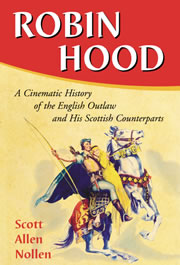 This is one of the first book-length treatments for medievalism on screen, focusing entirely on Robin Hood. Nollen rightly brags that this book covers “nearly a millennium, the years 1066-1998,” as the first 84 pages covers the known history, legends, and storytelling of the outlaw up until 1900 in chronological order. This includes not only appropriated anecdotes from obscure historical figures, but also Scottish contenders for the outlaw title such as Rob Roy and William Wallace.
This is one of the first book-length treatments for medievalism on screen, focusing entirely on Robin Hood. Nollen rightly brags that this book covers “nearly a millennium, the years 1066-1998,” as the first 84 pages covers the known history, legends, and storytelling of the outlaw up until 1900 in chronological order. This includes not only appropriated anecdotes from obscure historical figures, but also Scottish contenders for the outlaw title such as Rob Roy and William Wallace.
The rest of the book follows the cinematic releases of Robin Hood, again in chronological order of release. These chapters refer back to the history at the beginning, which readers will find useful to following along. Details include not only production information, but also identifying what was the inspiration for the characters and story elements. The author also focuses on Robin Hood-esque tropes that appear outside of the medieval period genre, such as westerns.
The end of the book includes 39 films with cast and credit details.
Paul, Andrew. “Reassessing Blacklist Era Television: Civil Libertarianism in You Are There, The Adventures of Robin Hood, and The Buccaneers.” American Studies 54, no. 1 (2015): 29-52.
Pugh, Tison. “Queer Crusading, Military Masculinity, and Allegories of Vietnam in Richard Lester’s Robin and Marian.” Studies in Medievalism 19 (2010): 114-134.
Richards, Jeffrey. “Robin Hood on the Screen.” In Robin Hood: An Anthology of Scholarship and Criticism. Edited by Stephen Knight, 429-440. Woodbridge: D. S. Brewer, 1999.
Richards provides a brief survey of Robin Hood depictions on screen throughout the 20th-century.
Stapleford, Richard. “Robin Hood and the Contemporary Idea of the Hero.” Literature/Film Quarterly 8, no. 3 (1980): 182-187.
Stapleford reviews Robin and Marian (1976) in the larger context of Robin Hood literary and cinematic tradition. The author argues that “any new film version of the Robin Hood legend must be seen against the background of our tradition of Robin Hood films and no film characterizes that tradition better than” The Adventures of Robin Hood (1938). The author then explores changes and additions to the Robin Hood tradition throughout history. As for Robin and Marian, Stapleford concludes “the film is ultimately about us,” as it is stripped of its post-medieval “courtly chivalrous traditions.”
Stock, Lorraine K. and Candance Gregory-Abbott. “The ‘Other’ Women of Sherwood: The Construction of Difference and Gender in Cinematic Treatments of the Robin Hood Legend.” In Race, Class and Gender in “Medieval” Cinema. Edited by Lynn T. Ramey and Tison Pugh, 199-214. New York: Palgrave, 2007.
Turner, David. Robin of the Movies: The Cinematic History of the Legendary Outlaw of Sherwood. Kingswinford: Yeoman Press, 1989.
Science Fiction
The following works examine medievalism found in science fiction.
Henthrone, Tom. “Boys to Men: Medievalism and Masculinity in Star Wars and E.T.: The Extra-Terrestrial.” In The Medieval Hero on Screen: Representations from Beowulf to Buffy. Edited by Martha W. Driver and Sid Ray, 73-89. Jefferson: McFarland, 2004.
Henthrone analyzes the rise of neomedievalism and its brand of masculinity in the late 1970s and early 1980s, which had its origins in a 19th-century view of the medieval world. The author uses this prism to view the original Star Wars (1977) and E.T. (1982), two coming-of-age films directed at young boys that “suggested that faith, loyalty, and courage were the basis for true masculinity and that women were simply victims to be rescued or prizes to be won.” However, the popularity of neomediavalism science fiction films would not last, as dystopian future films such as The Terminator (1984) and Aliens (1986) would come to dominate the box office by the mid-1980s.
Hume, Kathryn. “Medieval Romance and Science Fiction: The Anatomy of a Resemblance.” Journal of Popular Culture 16, no. 1 (1982): 15-26.
Hume explores five different themes common across medieval romance and science fiction. The author mostly focuses on literature, but the same conclusions apply to the screen, especially with evocations of Star Trek and Star Wars throughout the piece. Hume proposes several interesting parallels such as the knight and squire alongside Han Solo and Chewbacca.
Hume, Kathryn. “Quest Romance in Science Fiction.” In A Companion to Romance: From Classical to Contemporary. Edited by Corinne Saunders, 488-501. Oxford: Blackwell Publishing, 2004.
McCosker, Sylvia. “The Lady, the Knights and ‘the Force’ or How ‘Medieval’ is Star Wars?” culture@home, 2000.
McCosker examines the plot, settings, characters, weapons, vehicles, buildings, and encounters of the first four Star Wars films and concludes they “would be recognised by any medieval storyteller.” The website originally hosting it is now defunct, but is accessible through the Wayback Machine. Numerous medievalism works on Star Wars reference this article.
Robinson, Carol L. “The Cyberpunk Road Away from Middle-Earth Toward Virtual Atonement: Gender and Sexuality in William Gibson’s Fiction and the Wachowski Sibling’s Films.” In The Middle Ages in Popular Culture: Medievalism and Genre. Edited by Helen Young, 133-153. Amherst: Cambria Press, 2015.
Weisl, Angela Jane. The Persistence of Medievalism: Narrative Adventures in Contemporary Culture. New York: Palgrave, 2003.
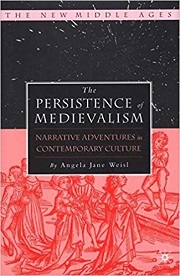 Although not exclusively focused on medeivalism on screen, Weisl spends half the book examining medieval romance in Star Trek and Arthurian legend persistent in Star Wars. This is a prime example where the definition of medievalism on screen extends outside the realm of historical films and explores themes in other genres such as science fiction. On that note, the rest of the book is just as fascinating, exploring the medievalism of baseball records set in the 1990s and the Baseball Hall of Fame in Cooperstown. Common themes include saints, relics, pilgrimages, confessions, gender, chivalry, and romantic deferral.
Although not exclusively focused on medeivalism on screen, Weisl spends half the book examining medieval romance in Star Trek and Arthurian legend persistent in Star Wars. This is a prime example where the definition of medievalism on screen extends outside the realm of historical films and explores themes in other genres such as science fiction. On that note, the rest of the book is just as fascinating, exploring the medievalism of baseball records set in the 1990s and the Baseball Hall of Fame in Cooperstown. Common themes include saints, relics, pilgrimages, confessions, gender, chivalry, and romantic deferral.
Tolkien
J. R. R. Tolkien’s work (academic and literary) is entrenched in medievalism and there is a plethora of scholarship on his publications and influence. One place to start is the annually-published Tolkien Studies. The works below focus almost exclusively on medievalism in film and television adaptations of Tolkien, typically Peter Jackson’s two trilogies–The Lord of the Rings (2001-2003) and The Hobbit (2012-2014).
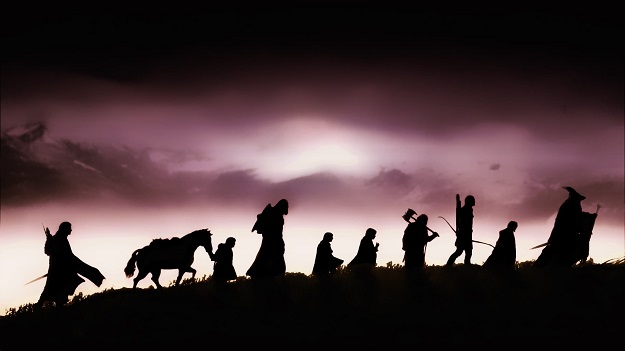
Auger, Emily E. “The Lord of the Rings’ Interlace: The Adaptation to Film.” Mythlore 30, no. 1-2 (2011): 143-62.
Barker, Martin and Ernest Mathijs, eds. Watching The Lord of the Rings: Tolkien’s World Audience. New York: Peter Lang, 2008.
Bates, Brian. The Real Middle Earth: Exploring the Magic and Mystery of the Middle Ages, J.R.R. Tolkien, and The Lord of the Rings. New York: St. Martin’s Press, 2002.
Bryant, Brantley L. “One does not simply laugh in Middle Earth: Sacrificing humor in Peter Jackson’s The Lord of the Rings.” Postmedieval 5, no. 2 (2014): 184-198.
Bryant argues “that the humor of the films, and its removal, encourages viewers to accept an ideology of masculine heroism, thus promoting a deferential relationship to a Middle Ages conceived of as a time of hierarchy and martial sacrifice.” For example, the non-Baggins Hobbits start out as a slapstick routine, but become more serious as the trilogy progresses. With this, the author concludes that “by shifting the audience from hobbit-dwarf slapstick to reserved heroism, the films promote what could be called a ‘traditional-essentialist’ view of the Middle Ages, one in which the medieval stands for hierarchical social order, for the erasure of difference in the name of preserving a dominant culture and for masculinist martial virtue celebrating unquestioning self-sacrifice as the highest good.”
Conversely, the warrior-heroes Aragorn, Gandalf and Legolas maintain a level of seriousness throughout. This “reinforces the films’ valorization of white, male, upper-class, able-bodied characters.”
Carretero-Gonzales, Margárita. “Tolkien after Tolkien: Medieval and Medieval Intertexts in Peter Jackson’s The Lord of the Rings.” In Fantasy and Science-Fiction Medievalisms: From Isaac Asimov to A Game of Thrones. Edited by Helen Young, 35-56. Amherst: Cambria Press, 2015.
The author explores the process of the filmmakers in converting Tolkien’s work to the screen. While one might consider Tolkien’s books descriptive, he still relied on “the endless powers of suggestion of what he termed ‘true literature.'” Thus, there was plenty of work necessary for the filmmakers in envisioning the precise details of buildings, rooms, and cultures, as well as “clothes, weapons, hairdos, costumes, furniture, and all sorts of other props.” Carretero-Gonzales explores the intertexts from Tolkien, as well as medievalisms that joined together to form Peter Jackson’s creation.
Comer, Todd A. “The Disabled Hero: Being and Ethics in Peter Jackson’s The Lord of the Rings.” Mythlore 35, no. 1 (20016): 113-131.
Croft, Janet Brennan, ed. Tolkien on Film: Essays on Peter Jackson’s The Lord of the Rings. Altadena: The Mythopoeic Press, 2004.
Ford, Judy Ann and Robin Anne Reid. “Councils and Kings: Aragorn’s Journey Towards Kingship in J.R.R. Tolkien’s The Lord of the Rings and Peter Jackson’s The Lord of the Rings.” Tolkien Studies 6 (2009): 71-90.
Flieger, Verlyn. “A Distant Mirror: Tolkien and Jackson in the Looking Glass.” Studies in Medievalism 13 (2005): 67-78.
Hall, R. D. “Through a Dark Lens: Jackson’s Lord of the Rings as Abject Horror.” Mythlore 25, no. 3 (2007): 55-59.
Harl, Allison. “The Monstrosity of the Gaze: Critical Problems with a Film Adaptation of The Lord of the Rings.” Mythlore (2007): 61-69.
Riga, Frank P., Maureen Thum, and Judith Kollmann. “From Children’s Book to Epic Prequel: Peter Jackson’s Transformation of Tolkien’s The Hobbit.” Mythlore 32, no. 2 (2014): 99-118.
Robinson, Carol L. “Electronic Tolkien: Characterization in Film and Video Games.” In Medieval Afterlives in Contemporary Culture. Edited by Gail Ashton, 124-133. London: Bloomsbury, 2015.
Salo, David. “Heroism and Alienation through Language in Lord of the Rings.” In The Medieval Hero on Screen: Representations from Beowulf to Buffy. Edited by Martha W. Driver and Sid Ray, 23-37. Jefferson: McFarland, 2004.
Salo explores how Tolkien employed language throughout his works to differentiate regions, races, and characters. While Jackson’s films follow this approach successfully, the films take them one step further with accents. The result is an alienness to the viewer steeped in borrowed features from or often associated with the medieval world.
Tally, Robert T., Jr. “Three Rings for the Elven-kings: Trilogizing Tolkien in Print and Film.” Mythlore 36, no. 1 (2017).
Thompson, Kristin. The Frodo Franchise: The Lord of the Rings and Modern Hollywood. Berkeley: University of California Press, 2007.
Viars, Karen and Cait Coker. “Constructing Lothiriel: Rewriting and Rescuing the Women of Middle-Earth From the Margins.” Mythlore 33, no. 2 (2015): 35-48.
Vikings
Brown, Harry. “Plastic Pagans: Viking Human Sacrifice in Film and Television.” Studies in Medievalism 23 (2014): 107-121.
Dahm, Murray. “Hollywood’s Favourite Viking: Ragnar Lodbrok.” Medieval Warfare 7, no. 1 (2017): 54-55.
Dahm, Murray. “More Norsemen on Film: Blood, Guts, and Vikings.” Medieval Warfare 8, no. 4 (2018): 54-57.
Harty, Kevin J., ed. The Vikings on Film: Essays of Depictions of the Nordic Middle Ages. Jefferson: McFarland, 2011.
Miscellaneous
These are works that didn’t fit nicely into any of the categories above or that I simply haven’t read yet to classify appropriately.
Airlie, Stuart. “Strange Eventful Histories: The Middle Ages in the Cinema.” In The Medieval World. Edited by Peter Linehan and Janet L. Nelson, 163-188. New York: Routledge, 2001.
Austin, Greta. “Were the Peasants Really So Clean? The Middle Ages in Film.” Film History 14 (2002): 136-141.
Austin categorizes medieval films into two types–realistic and ironic. The former has more to do with intent as the degree of realism is never complete. In addition, these films tend to be more “about modern Western life in a period dress.” Regardless, Austin finds usefulness in both types films, as they challenge historians to re-read texts and rethink what they know about the past, encouraging more curiosity about history.
Benson, Ed. “Culture Wars Medieval and Modern in Le Moine et la sorcière.” Film & History: An Interdisciplinary Journal of Film and Television Studies 29, no. 1-2 (1999): 56-70.
Bernau, Anke. “‘Poison to the Infant, but Tonic to the Man’: Timing The Birth of a Nation.” In Medieval Film. Edited by Anke Bernau and Bettina Bildhauer, 86-109. Manchester: Manchester University Press, 2009.
Bernau argues that The Birth of a Nation (1915) uses medievalism and timelessness to suggest authenticity for both racism and the Ku Klux Klan, barbarism in African Americans, and nationalism in the slain virgin in the film.
Bildhauer, Bettina. Filming the Middle Ages. London: Reaktion Books, 2011.
Bildhauer, Bettina. “Heart and Clock: Time and History in The Immortal Heart and Other Films about the Middle Ages.” In A Companion to the Historical Film. Edited by Robert A. Rosenstone and Constantin Parvulescu, 407-424. Malden: Wiley-Blackwell, 2013.
Brown, Harry. “Knights of the Ownership Society: Economic Inequality and Medievalist Film.” Studies in Medievalism 21 (2012): 37-47.
Against the backdrop of the 2008 Recession, Brown demonstrates how Americans are overly optimistic about their economic equality and opportunity, and how “recent medievalist film has emerged as a unique expression of this ‘overly optimistic’ belief.” In films such as King Arthur (2004), Kingdom of Heaven (2005), and Robin Hood (2010), “we find so few working poor” while instead finding “so many upwardly mobile knights.”
Burkholder, Peter. “Popular [Mis]conceptions of Medieval Warfare.” History Compass 5, no. 2 (2007): 507–524.
Burkholder examines perceptions on medieval warfare in films and video games, and among critics who slam them for historical accuracy. The author makes the case that “there is a long history of twisting the facts of medieval conflict to suit the needs and interests of general audiences, so that current movies and video games actually fit quite nicely into a traditional ‘medieval’ mold of storytelling.”
In addition, “demanding that filmmakers and game designers shape up and ‘get their facts straight’ is disingenuous, insofar as it suggests that medievalists and military historians are all on the same page.” To make this case, Burkholder reviews some of the evolving scholarship on medieval knights.
Burkholder, Peter. “X Marks the Plot: Crossbows in Medieval Film.” Studies in Popular Culture 38, no. 1 (2015): 19-40.
Burkholder, Peter and David Rosen. “Child Soldiers in Medieval(esque) Cinema.” In War, Myths, and Fairy Tales. Edited by Sara Buttsworth and Maartje Abbenhuis, 147-173. New York: Palgrave, 2017.
Burkholder and Rosen use the term “medievalesque” as opposed to medievalism to describe “medieval and medieval inspired cinematic fantasy worlds.” They found that the use of child soldiers in such films “are far more concerned with creating an aura of symbolic, emotional, and psychological authenticity than historical accuracy.” In addition, “the results are familiar depictions that are continuously recycled, creating immediately recognizable medievalesque fantasy worlds on the screen.”
The authors focus on popular films such as Braveheart (1995), the Lord of the Rings trilogy (2001–2003), King Arthur (2004), Kingdom of Heaven (2005), Robin Hood (2010), and the Harry Potter series (2001–2011).
Burns, David R. and Deborah R. Burns. “Overconsumption and Environmentalism in Labyrinth.” In Jim Henson and Philosophy: Imagination and the Magic of Mayhem. Edited by Timothy Dale and Joseph Foy, 45-53. Lanham: Rowman & Littlefield, 2015.
Burt, Richard. Medieval and Early Modern Film and Media. New York: Palgrave, 2008.
Burt, Richard. “Re-embroidering the Bayeux Tapestry in Film and Media: The Flip Side of History in Opening and End Title Sequences.” Exemplaria 19, no. 2 (2007): 327-350.
Carroll, Shiloh. “The Heart of the Labyrinth: Reading Jim Henson’s Labyrinth as a Modern Dream Vision.” Mythlore 28, no. 1 (2009): 103-112.
Chapman, James. Swashbucklers: The Costume Adventure Series. Oxford: Oxford University Press, 2015.
Cormier, Raymond J. “‘You Make Me Want to Be a Better Man’: Courtly Values Revived in Modern Film.” In The Legacy of Courtly Literature: From Medieval to Contemporary Culture. Edited by Deborah Nelson-Campbell and Rouben Cholakian, 77-88. New York: Palgrave, 2017.
Cormier explores courtly values in contemporary films. The threads of analysis include “hero/heroine saved through love and/or self-sacrifice”; “‘major personality shift’ of the hero under the influence of love”; and the “quest and rescue.” Films include Casablanca (1942), Excalibur (1981), Roxanne (1987), Pretty Woman (1990), Beauty and the Beast (1991), As Good As It Gets (1997), The Matrix (1999), Slumdog Millionaire (2008), and Tangled (2010).
D’Arcens, Louise. “Presentism.” In Medievalism: Key Critical Terms. Edited by Elizabeth Emery and Richard Utz, 181-188. Woodbridge: D. S. Brewer, 2014.
In this article, D’Arcens defines presentism as “the practice of representing, interpreting, and, more importantly, evaluating the past according to the values, standards, ambitions, and anxieties of a later ‘present.'” D’Arcens identifies three approaches of presentism–first, using modern standards to judge the past; second, using the past as a nostalgic correction to modernity; and third, “depicting the medieval past as alive and present within modernity.” This last approach, D’Arcens sees as “an ingenious and playful variety.”
Although presentism is by no means limited to the screen, D’Arcens cites multiple movies as examples including The Navigator: A Medieval Odyssey (1988), Black Knight (2001), A Kid in King Arthur’s Court (1995), and Bill and Ted’s Excellent Adventure (1989).
Dahm, Murray. “Hidden Cinema. Medieval Normans and Irish on film.” Medieval Warfare 6, no. 4 (2016): 53-55.
Dahm, Murray. “‘I know what it is to take a city’: The Film of El Cid.” Medieval Warfare 7, no. 6 (2017): 53-55.
Dahm, Murray. “In Civilian Garb: Non-Military Films of the Medieval World.” Medieval Warfare 9, no. 1 (2019): 54-57.
Dahm, Murray. “Medieval Russia on Film, Part I: Ivan the Terrible.” Medieval Warfare 9, no. 3 (2019): 54-57.
Dahm, Murray. “Medieval Russia on Film, Part II: Ivan the Terrible.” Medieval Warfare 9, no. 4 (2019): 54-57.
Dahm, Murray. “Right in Everything but the Details: Jousting on Film.” Medieval Warfare 7.3 (2017), pp. 52-54.
Dahm, Murray. “Silent, Unwashed and Downtrodden: Peasants on film.” Medieval Warfare 6, no. 6 (2016): 54-55.
Dahm, Murray. “Swords for Hire, Hollywood style: Condottieri on film.” Medieval Warfare 8, no. 1 (2018): 55-57.
deWinter, Jennifer. “Neo-Bushido: Neomedieval Animé and Japanese Essence.” In Neomedievalism in the Media. Edited by Carol L. Robinson and Pamela Clements, 83-102. Lewiston: The Edwin Mellen Press, 2012.
Driver, Martha. “More on Medieval Movies: Surveys from the Field.” Film & History 29, no. 3-4 (1999): 5-7.
Driver, Martha. “Writing About Medieval Movies: Authenticity and History.” Film & History 29, no. 1-2 (1999): 5-7.
Elliott, Andrew B. R. “British Historical Drama and the Middle Ages.” In Upstairs and Downstairs: British Costume Drama Television from The Forsyte Saga to Downton Abbey. Edited by Julie Taddeo and James Leggott, 113-124. Lanham: Rowman & Littlefield, 2014.
Elliott takes on the lack of medieval and early modern period drama on British television, believing that these periods “can also bring something to the debate, frequently harnessing precisely those same values and ideas that characterize the more familiar kinds of period dramas.” To do this, Elliott focuses on Robin Hood, King Arthur, and the Crusades on their ability to address three key issues typical of period dramas–evoking national identity and nostalgia, producing quality British television, and dealing with contemporary issues.
Elliott, Andrew B. R. “‘Our Minds Are in the Gutter, but Some of Us Are Watching Starz…’: Sex, Violence, and Dirty Medievalism.” In Fantasy and Science-Fiction Medievalisms: From Isaac Asimov to A Game of Thrones. Edited by Helen Young, 97-116. Amherst: Cambria Press, 2015.
Filmer, Kath. “Beware the Nothing: An Allegorical Reading of Ende’s The Neverending Story.” Mythore 12, no. 4 (1986): 34-36.
Fletcher, Natalie M. “My (Un)Fair Lady: Power, Fairness, and Moral Imagination in Labyrinth.” In Jim Henson and Philosophy: Imagination and the Magic of Mayhem. Edited by Timothy Dale and Joseph Foy, 119-127. Lanham: Rowman & Littlefield, 2015.
Griffith, John Lance. “Integration and Inversion: Western Knights in Japanese Manga and Anime.” Medieval and Early Modern English Studies 17, no. 1 (2009): 89-119.
Griffiths, Alison. “The Revered Gaze: The Medieval Imaginary of Mel Gibson’s The Passion of the Christ.” Cinema Journal 46, no. 2 (2007): 3-39.
Grimbert, Joan Tasker. “Variations on a Transcultural Phenomenon: The Potion Scene in Four Film Versions of the Legend of Tristan and Iseult.” In The Legacy of Courtly Literature: From Medieval to Contemporary Culture. Edited by Deborah Nelson-Campbell and Rouben Cholakian, 131-147. New York: Palgrave, 2017.
Grimbert focuses on love potion depictions in Tristan and Iseult films, which is “one of the most telling ways in which the directors distinguish themselves” in the retelling of the legend. The author examines four films–L’Éternel Retour (1943), Lovespell or Tristan and Isolt (1979), I Skugga Hrafnsina (1988), and Tristan and Isolde (2006).
Grindley, Carl James. “Arms and the Man: The Curious Inaccuracy of Medieval Arms and Armor in Contemporary Film.” Film & History (2006): 14-19.
Grindley, Carl James. “The Hagiography of Steel: The Hero’s Weapon and Its Place in Pop Culture.” In The Medieval Hero on Screen: Representations from Beowulf to Buffy. Edited by Martha W. Driver and Sid Ray, 151-166. Jefferson: McFarland, 2004.
Grindley explores the “long campaign to define the hero by making fetish objects of his or her artifacts,” particularly weapons and armor. The exploration traces descriptions of hero’s weapons through Homer, Beowulf, and Arthurian legend before turning to films such as Dirty Harry (1972), Conan the Barbarian (1982), and Excalibur (1981). Grindley finds that the weapons are often the most powerful, yet only useful in the hands of their heroes, a concept that “has remained relatively consistent for nearly three thousand years.”
Hantke, Steffen. “Going Medieval: Representations of Post-Nuclear Survival in Threads and The Tripods on the BBC (1984).” AAA: Arbeiten aus Anglistik und Amerikanistik 38, no. 1 (2013): 3-17.
Haydock, Nickolas. Movie Medievalism: The Imaginary Middle Ages. Jefferson: McFarland & Company, 2008.
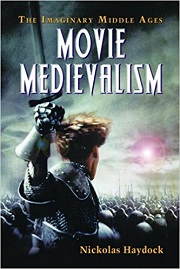 Haydock offers a mishmash of analysis across a multitude of films and themes. Although not a cohesive approach, the book is especially valuable for what Haydock has to say about particular films. In addition, the work is full of superb kernels such as “there are fewer and fewer barriers between the study of the Middle Ages and the study of medievalism. Indeed, all of us will one day be accused of having done medievalism rather than medieval studies.” And, “Our ideas about the distant past are perhaps more vulnerable to the lure of cinema because there is no immediate access to falsification. The very alterity of the Middle Ages works to make it an especially potent preserve of fantasy, the realm par excellence of the Imaginary.”
Haydock offers a mishmash of analysis across a multitude of films and themes. Although not a cohesive approach, the book is especially valuable for what Haydock has to say about particular films. In addition, the work is full of superb kernels such as “there are fewer and fewer barriers between the study of the Middle Ages and the study of medievalism. Indeed, all of us will one day be accused of having done medievalism rather than medieval studies.” And, “Our ideas about the distant past are perhaps more vulnerable to the lure of cinema because there is no immediate access to falsification. The very alterity of the Middle Ages works to make it an especially potent preserve of fantasy, the realm par excellence of the Imaginary.”
Haydock tends to introduce potentially useful theories and models, but does not follow them through effectively. The simplest example is coining the term “cinemedievalism” and using it throughout the book, but the book is titled “Movie Medievalism.” This work is a difficult place to start for the uninitiated, but the more seasoned medievalist will undoubtedly find it intriguing.
Hodapp, William. “Arthur, Beowulf, Robin Hood, and Hollywood’s Desire for Origins.” The Year’s Work in Medievalism 26 (2011): 66-89.
Jancovich, Mark. “‘The Purest Knight of All’: Nation, History, and Representation in ‘El Cid’ (1960).” Cinema Journal 40, no. 1 (2000): 79-103.
Jancovich, Mark. “‘There’s Nothing So Wrong with a Hollywood Script That a Bunch of Giant CGI Scorpions Can’t Solve’: Computer Generated Images and Camp in the Critical Reception of the Post-Gladiator Historical Epics.” In The Return of the Epic Film: Genre, Aesthetics and History in the 21st Century. Edited by Andrew B. R. Elliott, 57-73. Edinburgh: Edinburgh University Press, 2015.
Jancovich explores the reception of CGI in historical epics. Remarkably, Gladiator (2001) was derided for its use, but with the release of each new epic film, critics slowly began to accept it, especially by the release of Kingdom of Heaven (2005). Between Gladiator and Clash of the Titans (2010), the author found that most reviews attempted to engage in “political readings of these films in an attempt to add weight and significance to the practice of film reviewing, [but] these readings were not very developed.” Instead, the reviewers “were more concerned with the use of spectacle in these films, particularly the use of CGI.” Also of interest is the author’s discussion on the reception of King Arthur (2004) in this context.
Jewers, Caroline. “Hard Day’s Knights: First Knight, A Knight’s Tale, and Black Knight.” In The Medieval Hero on Screen: Representations from Beowulf to Buffy. Edited by Martha W. Driver and Sid Ray, 192-210. Jefferson: McFarland, 2004.
Jewers explores how the three films incorporate modern values and mores on topics such as democracy, globalization, upward mobility, race, and gender.
Jewers, Caroline. “Heroes and Heroin: From True Romance to Pulp Fiction.” Journal of Popular Culture 33, no. 4 (2000): 39-61.
Johnson, Valerie. “Identity and Posthuman Medievalism in Sons of Anarchy.” The Year’s Work in Medievalism 30 (2015).
Johnston, Andrew James, Margitta Rouse, and Philipp Hinz, eds. The Medieval Motion Picture: The Politics of Adaptation. New York: Palgrave, 2014.
Kelly, A. Keith. “Medieval Movie Madness.” The Year’s Work in Medievailism 17 (2002): 107-114.
This is a shorter version of Kelly’s “Beyond Historical Accuracy” (2004) published in Perspicuitas (see As a Teaching Tool section above).
Kelly, Kathleen Coyne and Tison Pugh, eds. Queer Movie Medievalisms. Surrey: Ashgate, 2009.
Lewis, Katherine J. “‘Accident My Codlings’: Sitcom, Cinema and the Re-writing of History in The Blackaadder.” In Mass Market Medieval: Essays on the Middle Ages in Popular Culture. Edited by David W. Marshall, 113-125. Jefferson: McFarland, 2007.
Lindley, Arthur. “The Ahistoricism of Medieval Film.” Screening the Past 3 (1998).
After teaching historical film for years, Lindley explores cinematic depictions of the medieval world, concluding that filmmakers use the medieval not to connect us to the past, but as a means of telling stories. Lindley also provides five models that filmmakers employ the Middle Ages with examples for each–an entry in childhood, missing spirituality, lost sexual archetypes, heroism, and a visionary key.
Manning, Scott. “Warriors ‘Hedgehogged’ in Arrows: Crusaders, Samurai, and Wolverine in Medieval Chronicles and Popular Culture.” The Year’s Work in Medievalism 33 (2018): 62-77.
Marra, Jennifer. “You Couldn’t Handle Real Life: The Villians of Labyrinth and MirrorMask.” In Jim Henson and Philosophy: Imagination and the Magic of Mayhem. Edited by Timothy Dale and Joseph Foy, 129-137. Lanham: Rowman & Littlefield, 2015.
Matthews, David. Medievalism: A Critical History. Woodbridge: D. S. Brewer, 2015.
McSheffrey, Shannon. “William Webbe’s Wench: Henry VIII, History and Popular Culture.” In The Middle Ages on Television: Critical Essays. Edited by Meriem Pagès and Karolyn Kinane, 53-77. Jefferson: McFarland, 2015.
McSheffrey’s essays on The Tudors (2007-2010) may seem like an odd inclusion in this bibliography and the author admits the series “does not quite fit the medievalism paradigm, and indeed is the best-known recent example of the cultural phenomenon scholars have labeled ‘Tudorism,’ a cousin of the much-better-studied medievalism.” However, McSheffrey points out that the series “begot other historical television series on American cable networks: The Pillars of the Earth, Camelot, World Without End, The White Queen, The Borgias and Vikings,” which all but one are clearly medievalism on screen. Thus, “The Tudors fits happily within the phenomenon of television medievalism.”
With this in mind, McSheffrey considers both how the creators “navigated what viewers knew about and expected to see regarding Henry, and reflect on the differences between what scholars and scriptwriters make of the remnants of the past with which both work.” The author finds that the series “has a great deal in common with the medieval costume dramas presented on British and North American television in recent years.”
Pagès, Meriem and Karolyn Kinane, eds. The Middle Ages on Television: Critical Essays. Jefferson: McFarland, 2015.
This is the first book-length treatment that focuses exclusively on medievalism in television. With 10 different essays focusing on a wide-range of topics including political, narrative, genre, gender, and sexuality, the authors cover Full Metal Jousting (2012), Joan of Arcadia (2003-2005), The Tudors (2007-2010), Die Jagd nach dem Schatz der Nibelungen or “The Charlemagne Code” (2009), Merlin (2008-2012), Camelot (2011), King Arthur and the Knights of Justice (1992-1993), The Mists of Avalon (2001), Kaamelott (2005-2009), and Game of Thrones (2011-2019).
Peterson, Mark Allen. “From Jinn to Genies: Intertextuality, Media, and the Making of Global Folklore.” In Folklore / Cinema: Popular Film as Vernacular Culture. Edited by Sharon R. Sherman and Mikel J. Koven, 93-112. Logan: Utah State University Press, 2007.
In this article, Peterson traces the evolution of the jinn in Middle Eastern culture and religion to its appearances in Arabian Nights. The latter brings an in-depth analysis of the evolution of jinn throughout cinema, as it became completely secularized by the 1970s. After reviewing 80 different films, Peterson points out that out of all the variations of jinn in the literary Arabian Nights, Western cinema only focuses on two flavors–the “brass bottle” narrative and the Aladdin version where the hero must defeat an evil wizard and win the heart of the caliph’s daughter. This article is necessary for anyone researching jinn in cinema.
Racicot, William. “Anything Different Is Good: Incremental Repetition, Courtly Love, and Purgatory in Groundhog Day.” In Mass Market Medieval: Essays on the Middle Ages in Popular Culture. Edited by David W. Marshall, 186-197. Jefferson: McFarland, 2007.
Racicot compares the themes of Groundhog Day (1993) with the medieval themes of courtly love and purgatory, as well as to the repetitions found in the works of Marie de France and Chretien. Before doing that, the author provides a 2 1/2 page defense on the usefulness of examining the medievalism of non-medieval films, as our current “attitudes and conventions have grown out of theirs.”
Ramey, Lynn T. and Tison Pugh, eds. Race, Class and Gender in “Medieval” Cinema. New York: Palgrave, 2007.
Reiter, Geoffrey. “‘Two Sides of the Same Magic’: The Dialect of Mortality and Immortality in Peter S. Beagle’s The Last Unicorn.” Mythlore 27, no. 3 (2009): 103-116.
Richards, Jeffrey. “Sir Ridley Scott and the Rebirth of the Historical Epic.” In The Return of the Epic Film: Genre, Aesthetics and History in the 21st Century. Edited by Andrew B. R. Elliott, 19-35. Edinburgh: Edinburgh University Press, 2015.
Richards explores the “political agenda lying behind” Ridley Scott’s historical epics Gladiator (2001), Kingdom of Heaven (2005), and Robin Hood (2010), lamenting, “There is nothing more tiresome than critics who simply list historical errors without explaining why.” Accordingly, the author examines some of the inspirations for the movies that include 19th-century paintings and literature, modern histories, and of course, previous Hollywood epics. Using the filmmakers’ own statements, the author demonstrates that the intent of the films was to showcase America. Richards also sees the three films telling essentially the same story that features a working-class hero with an aristocratic adviser. The heroes become “military leaders, physically courageous but also morally and intellectually committed.”
Risden, E. L. “Miyazaki’s Medieval World: Japanese Medievalism and the Rise of Anime.” The Year’s Work in Medievalism 28 (2013).
Robinson, Carol L. “Neomedievalism in a Vortext of Discourse: Film, Television, and Digital Games.” In Neomedievalism in the Media. Edited by Carol L. Robinson and Pamela Clements, 1-13. Lewiston: The Edwin Mellen Press, 2012.
Roman, Christopher. “The Use of Nature: Representing Religion in Medieval Film.” In Neomedievalism in the Media. Edited by Carol L. Robinson and Pamela Clements, 55-81. Lewiston: The Edwin Mellen Press, 2012.
Rouse, Margitta. “‘Hit Men on Holiday Get All Medieval’: Media theory and multiple temporalities in Martin McDonagh’s In Bruges.” English European Studies 15, no. 2 (2011): 171-182.
Examines the medieval themes in Martin McDonagh In Bruges (2008).
Rupp, Teresa P. “From Ivanhoe to Ironclad: Excavating Layers of Tradition in a Medieval Film.” The Year’s Work in Medievalism 32 (2017).
Rupp examines the layers of medievalism of Ironclad (2011), concluding that it is ultimately “an Enlightenment movie.”
Sainato, Susan Butvin. “Not Your Typical Knight: The Emerging On-Screen Defender.” In The Medieval Hero on Screen: Representations from Beowulf to Buffy. Edited by Martha W. Driver and Sid Ray, 133-146. Jefferson: McFarland, 2004.
Sainato explores how the traditional definition of medieval knight is evolving through works such as Robin Hood: Prince of Thieves (1991), First Knight (1995), Shrek (2001), A Knight’s Tale (2001), and Buffy the Vampire Slayer (1997-2003) television series. After tracing the evolution of these changes on screen, Sainato spends the second half focusing on Buffy, as the character defies virtually every normal convention.
Sigler, Lora Ann. Medieval Art and the Look of Silent Film. Jefferson: McFarland, 2019.
Slampyak, Diana E. “Chivalric Virtues in Female Form: Crouching Tiger, Hidden Dragon‘s Wudan Warrior Princess as Medieval Hero.” In The Medieval Hero on Screen: Representations from Beowulf to Buffy. Edited by Martha W. Driver and Sid Ray, 115-132. Jefferson: McFarland, 2004.
Slampyak explores how director Ang Lee struggled to converge the styles of Hong Kong action-film genre of wuxia pian, Hollywood happy endings, and medieval romance in Crouching Tiger, Hidden Dragon (2000). The arc of the Jen Yi character follows many of the conventions of a medieval hero that goes into exile to redeem herself and learn her place in society, but the film lacks the ending typically found in modern films and even medieval romances.
Srebnick, Walter. “Re-presenting History: Ivanhoe on the Screen.” Film & History: An Interdisciplinary Journal of Film and Television Studies 29, no. 1-2 (1999): 46-54.
Sturtevant, Paul B. “Based on a True History?: The Impact of Popular ‘Medieval Film’ on the Public Understanding of the Middle Ages.” PhD diss., The University of Leeds, 2010.
Sturtevant, Paul B. “Bechel Testing the Middle Ages.” Public Medievalist, August 7, 2014.
Sturtevant runs medieval films through the Bechel Test that in order to pass much have 1.) Two named female characters, 2.) Who talk to each other, and 3.) About something other than a man. Out of 17 popular Medieval movies, only 4 of them passed. Sturtevant emphasizes this problem on our perception of the period, as “time and again I found people–even women— downplaying or even disregarding entirely the role of women in the medieval world. And thus they saw women’s exclusion from films about the period justifiable, normal, even occasionally desirable.” The author explores what it will take to change this trend and public perceptions of women’s role in the Middle Ages.
The author is looking to expand his list and welcomes contributions from readers.
Sturtevant, Paul B. “Defining the Epic: Medieval and Fantasy Epics.” In The Return of the Epic Film: Genre, Aesthetics and History in the 21st Century. Edited by Andrew B. R. Elliott, 110-128. Edinburgh: Edinburgh University Press, 2015.
Sturtevant presents a new method to define “epic” when talking about films that is tangible and immediately applicable. Quite simply, the film must allow “a range of audiences, and a multitude of individuals, to recognize themselves, and people like them” and the audiences must empathize with “the story of a group rather than an individual.” To demonstrate this approach, Sturtevant examines the degree of its success in Kingdom of Heaven (2005), Arn (2007), King Arthur (2004), and Robin Hood (2010), but the article is most interesting in its analysis of The Lord of the Rings trilogy (2001–2003).
Examining the different storylines in the Rings trilogy, Sturtevant makes the astute point that “an enterprising editor could create two separate films from these strands which would be entirely comprehensible and satisfactory, but of which only the film of the King strand would be an epic.” More to the point, “It is easy to see the difference between an epic and adventure film when comparing these two strands of The Lord of the Rings.”
Swank, Kris. “The Arabian Nights in 21st-Century Fantasy and Fiction Film.” In Fantasy and Science-Fiction Medievalisms: From Isaac Asimov to A Game of Thrones. Edited by Helen Young, 163-181. Amherst: Cambria Press, 2015.
Torner, Evan. “Nature and Adventure in Die Jagd nach dem Schatz der Nibelungen.” In The Middle Ages on Television: Critical Essays. Edited by Meriem Pagès and Karolyn Kinane, 78-96. Jefferson: McFarland, 2015.
Torner focuses on the German made-for-television movie Die Jagd nach dem Schatz der Nibelungen or “The Charlemagne Code” (2009), a work in the same vein as National Treasure (2004) that frames “the academic search for lost medieval history as a tongue-in-cheek cinematic thrill ride.” The author focuses on two questions: “What are the national and transnational stakes” of the film? “And how does such a film reconfigure the notion of the ‘medieval’ to suit modern needs and fantasies?”
Toswell, M. J. “The Tropes of Medievalism.” Studies in Medievalism 17 (2009): 68-76.
Although not solely focused on movies, Toswell focuses on two tropes of medievalism. By trope, Toswell means a way “in which someone engaged in recreating the Middle Ages can do so with a kind of useful shorthand.” The first trope is the dragon, which has numerous incarnations including the fire-breathing variety and the tamable pets. The second trope of “realism” is the notion of grittiness often associated with the period, as filmmakers seek to create this “realism” even in stories such as Beowulf.
Umland, Rebecca A., and Samuel J. Umland. “All for Love: The Myth of Romantic Passion in Japanese Cinema.” Mythlore 23, no. 3 (2001): 34-42.
Wang, Denise Ming-yueh. “Ingmar Bergman’s Appropriations of the Images of Death in The Seventh Seal.” Medieval and Early Modern English Studies 17, no. 1 (2009): 41-62.
Weisl, Angela Jane. “The Most Dangerous Sport in History Is About to Be Reborn: Medievalism and Violence in Full Metal Jousting.” In The Middle Ages on Television: Critical Essays. Edited by Meriem Pagès and Karolyn Kinane, 15-30. Jefferson: McFarland, 2015.
In History Channel’s Full Metal Jousting, “The Middle Ages represent the possibility of authorized violence and spectacle of witnessing its combatants injuring one another.” Weisl argues, “The show itself enacts an odd engagement with and rejection of the Middle Ages.” After reviewing the first season of the show, Weisl concludes, the makers of the show “re-create the past not as a real Middle Ages, but as a reflection of their own desires for this past.”
Woods, William F. The Medieval Filmscape: Reflections of Fear and Desire in a Cinematic Mirror. Jefferson: McFarland, 2014.
Woods, William F. “Seeking the Human Image in The Advocate.” Studies in Medievalism 12 (2002): 55-78.
Woods explores The Advocate (1993) in detail to determine how it is “about the Middle Ages as well as about us,” which are the ingredients Woods believe make a good medieval film.
Young, Helen. “Introduction: Multiple Middle Ages.” In The Middle Ages in Popular Culture: Medievalism and Genre. Edited by Helen Young, 1-9. Amherst: Cambria Press, 2015.
In this introduction to an edited work, Young makes some salient points including “to date, the most extensive corpus of work on popular-cultural medievalisms is in film studies.” The author argues that there is a stronger focus on what we can see and hear through popular media, as opposed to what we read even though most of the popular medievalism movies are based on written works. Although Young claims the chapters in the edited book generally focus on print, there are still three chapters focused on film and television listed elsewhere in this bibliography.

